Geneva Motor Show 2011
Geneva 2011 saw a mad mix of environmentally responsive vehicle design and downright aggressive macho metal. This, mixed with quite a few heritage cars on show, created an almost surreal atmosphere - perhaps exposing car companies' desperation to prove their multi-faceted credentials. That's not to say the show lacked credible design and innovative design thinking.
Starting with power, Jaguar unveiled the XKR-S, its fastest production sports car to date that promises to be one of the cleanest fast cars around. Design director Ian Callum had this to say: 'This is the cleanest car in its class, producing under 300g/km so it is relatively efficient.'
The XKR-S stood in complete contrast to last year's CX-75 electric concept car. We asked Callum how he explains these two very different propositions: one is finding a contemporary Jaguar aesthetic that is in keeping with zeitgeist and environmental concerns; the other is a showcase for power.
'You're right we have to find a balance,' he answered candidly. 'We are a performance car company so we have to have something up there saying we are capable of doing this,' he continued, adding, 'The challenge in the future is to have a car like this with extremely green credentials. We've developed the technology for the CX-75 and it would be a terrible shame not to build it. In my view it is everything the brand stands for.'
Jaguar also celebrated 50 years of the E-Type on the eve of the show. Earlier that day we were taken to du Parc des Eaux Vives on the edge of the city, the very place where Jaguar founder Sir William Lyons first unveiled the car half a century ago. Here the company had gathered a range of E-Types, coupés and convertibles, from the heritage museum and through private owners, themselves present, their personal narratives lending a human touch as we relived the 1961 test route up a nearby hill climb and by Lake Geneva.
In 1961 the E-Type caused an immediate sensation, with striking design, sporty driving dynamics (it could reach 150mph) and competitive pricing. Enzo Ferrari called it: 'the most beautiful car in the world'. Brigitte Bardot, Tony Curtis and Steve McQueen owned one - and it became the symbol of modernity and the free-spirited 1960s.
Nowadays our priorities have shifted. Speed - in some circles anyhow - is no longer the indicator of modernity, and car designers are almost apologetic about showcasing the power beneath the metal. Or so it would seem.
Wallpaper* Newsletter
Receive our daily digest of inspiration, escapism and design stories from around the world direct to your inbox.
Back at the show, new launches came thick and fast. Aston Martin unwrapped the cover off the Virage, a V12-engined GT that sits somewhere between the DB9 and DBS; and Lamborghini the Aventador, another cartoon-like supercar to replace the outgoing Murcielago.
Ferrari presented the Pininfarina-designed four-wheel-drive FF GT. Exhibited in red on the Ferrari stand, and in a much more subtle white at Pininfarina, it is an interesting proposition by a marque eager to capitalise on new markets and female buyers.
A notable theme that's been at the forefront of current vehicle design is the search for new vernaculars for the family car, forms that are compact yet also spacious. Volkswagen's Bulli, for instance, is a small modern day 1950s Camper van concept with six seats - aimed at younger buyers who would need to double up their car as a mobile office.
Renault also had some inspired cars on display. The French marque has been rethinking its position under its present design boss, Dutch designer Laurens Van der Acker. He has been pushing for a new design language that highlights the human, more populist Renault heritage with the three concept cars DeZir, R-Space and Captur. Sadly these are predominately conceptual ideas although the firm is committed to applying many of the features, especially from the interior, to its upcoming production cars.
Audi's A3 Saloon concept, on the other hand, is almost production ready. Speaking to us at the show, head of Audi design Stefan Sielaff said: 'We feel a strong renaissance of the original compact, efficient, smaller saloons especially in markets like China and the US where the taste is a little more conservative and so the demand for saloons is quite high.' In typical Audi fashion, the car is meticulously designed and boasts material finishing and an attention to detail rarely found in this category.
The Range Rover Evoque was no doubt the star of the so-called 'soft off-roader' category. Clearly, and unashamedly, aimed at the non off-roader buyer - young, female and design conscious - the Evoque hails a new design direction away from overtly utilitarian one for the brand.
Speaking with Land Rover design director Gerry McGovern at the show, he admitted the car is 'more of a design approach. The vehicle still has the overall integrity and the capabilities, but it is capability that is relevant today,' he said.
'People say you're glamorising the brand and that is probably true but so what,' he continued. 'I wouldn't call it overt bling though. We're making a transition from selling four-by-four vehicles to luxury products.' Incidentally, the Evoque was selected as the best production car of the year by the people's vote at the Car Design of the year that evening.
Not surprisingly, sustainable driving featured high on the list with almost all manufacturers showing both zero-emission production cars and advanced design thinking in this area. Peugeot showed the EX1 electric racecar and Nissan the Esflow - both designed to convey how the electric powertrain can open up so much scope for designers to make sexy cars and supercars.
Head of Nissan Design Europe Victor Nacif told W* that 'the mentality of a sports car is the same as the electric car. The sports car is also about pure efficiency, to get there as quickly as you can and as efficiently as you can. Having an electric engine in there makes sense.'
Peugeot's Gilles Vidal echoed a similar philosophy. Referencing the EX1, a record-breaking two seater electric sports car, he told us that 'the idea is to show that electric driving isn't just for slow city cars. It can be about performance, driving experience and driving pleasure.'
Yet, it was left to BMW to truly make a statement with some real advanced thinking wrapped inside the Vision ConnectedDrive concept. 'This is not conceptual,' Adrian Van Hooydonk told W* as he explained the thinking behind this visionary car, but rather, a bed of ideas that are doable and ones that genuinely push forward driving and mobility in the real world.
'Two years ago we showed Vision EfficientDynamics that was also dealing with a new technology, mainly lightweight. With this car we're showing something that is invisible but is about connectivity,' he said. 'Internet connectivity is all good and well but the deciding factor will now depend on how you deliver this information to the driver and the co-driver.
'Our Megacity Vehicle, out in two years, will be zero emission and will have that kind of connectivity to its immediate environment in the megacity. This car is more for the current city - somewhere like London and Paris,' he concluded.
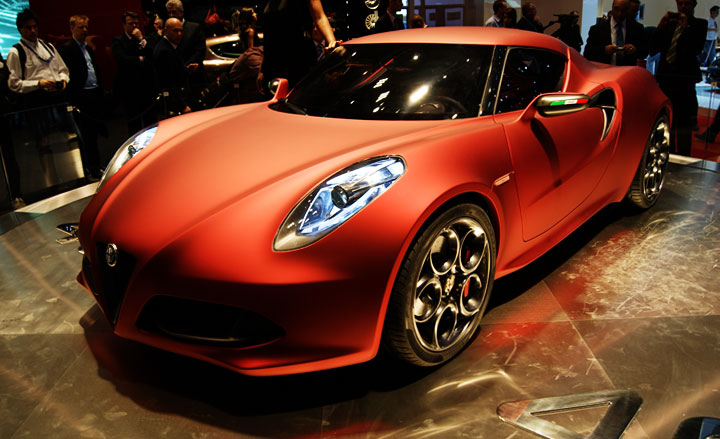
Alfa Romeo 4C GTA
The Alfa Romeo 4C GTA hints at future design cues for the Italian marque.
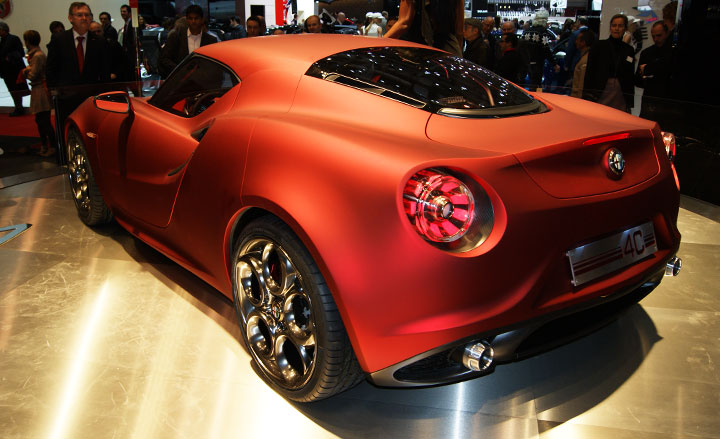
Alfa Romeo 4C GTA
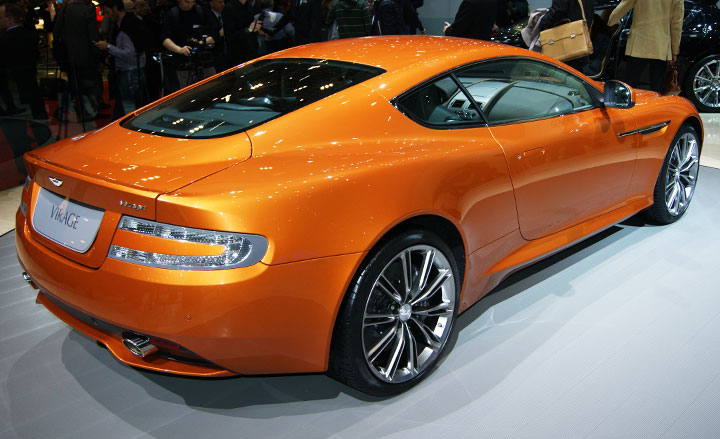
Aston Martin Virage
The Aston Martin Virage and Virage Volante are powered by the marque's hand-built 6.0 litre V12 engine and combine technology from the DBS with the comfort and refinement of the DB9, to sit somewhere between the two in the sporting GT line-up.
Sale date: May 2011
Price: Circa £150,000
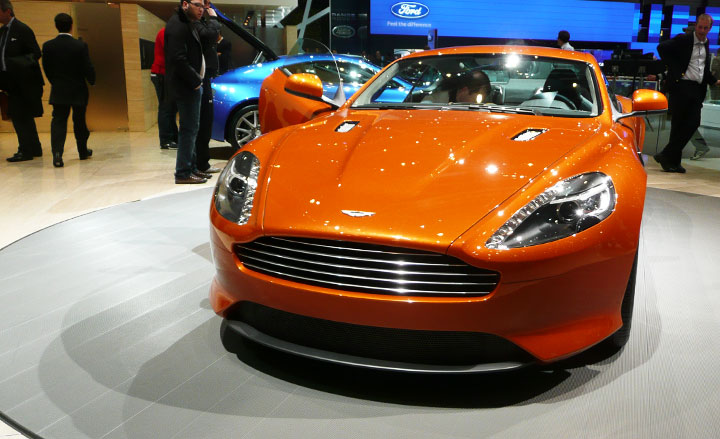
Aston Martin Virage
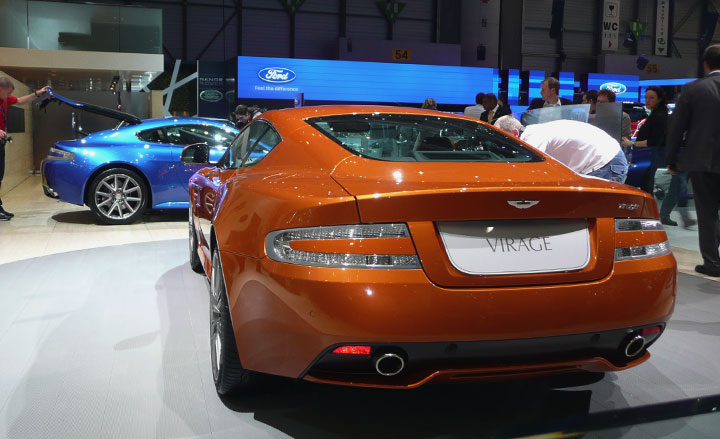
Aston Martin Virage
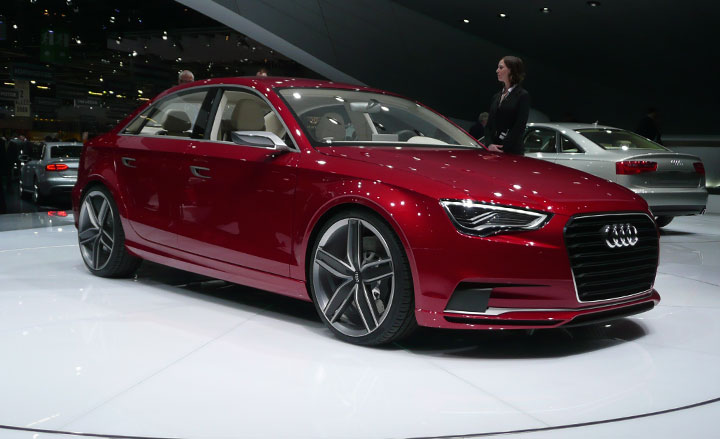
Audi A3 Saloon Concept
The A3 Saloon Concept previews the 2012 A3 production car. The saloon/sedan package is new to the A3 family with Audi design director Stefan Sielaff confirming that it would become a new family member.
'Our marketing experts are convinced this is the right product for China and the US,' he notes. 'In Shanghai, Hong Kong and Beijing people are behaving rather American. You need the prestigious big cars for chauffer-driven activities, but the normal Chinese customer is youthful and they are keen on the new definition of the saloon.'
The concept has four seats, is 4440mm long, 1840mm wide, but just 1390mm high, making it appear dynamic. The short overhang was achieved by minimising certain ingredients to achieve a compact front-end. 'We chopped the roof for the show car and made the sides wider it appears bigger. The production version is much more modest,' admits Sielaff.
The designer says the Audi range needs to find more differentiation between the various models explaining that it is with the interior that the marque intends to achieve this. 'The identity of the individual cars is something we have to massage out and has a lot to do with the interior,' he says candidly. 'You need to immediately know what family member you're sitting in. It is more adventurous in the A1 and then pretty quickly we develop a premium interior with the A3. Bit by bit we tune it up to the A8.'
Audi will show the electric e-tron version of this car at the Shanghai Motor Show next month. Sielaff promises that the e-tron A3 Saloon will be more modest looking to express the electric drive.
www.audi.com
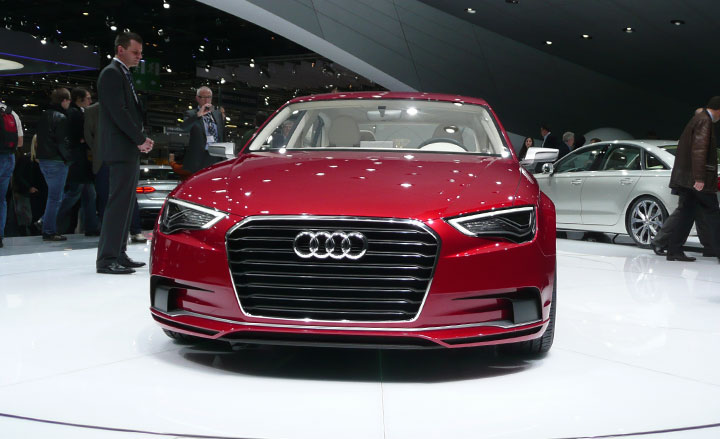
Audi A3 Saloon Concept
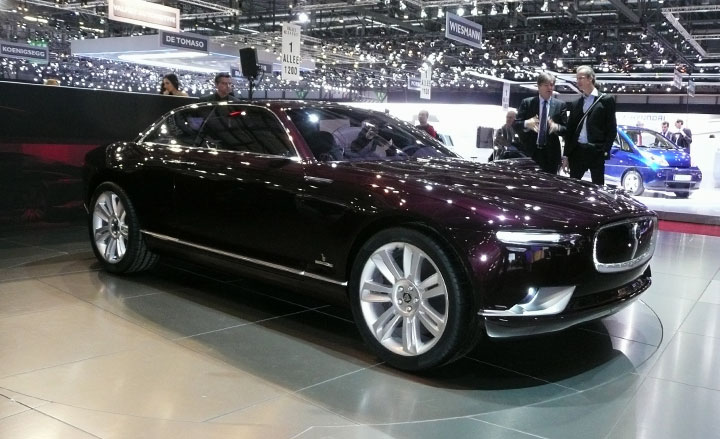
Bertone B99
Following the futuristic and aesthetically loud Pandion Alfa Spider concept last year, Italian design consultancy Bertone seemed in a rather more sober mood at the 2011 Geneva Show with the B99 Jaguar compact executive concept. The B stands for Bertone and the 99 represents the years since the founding of the company. The firm has worked with Jaguar in the past, designing the limited edition 1957 XK 150, the 1966 FT concept and the 1967 Ascot. Here design director Mike Robinson is exploring a new form language, attempted to translate the marque's classic style for the future.
www.bertone.com
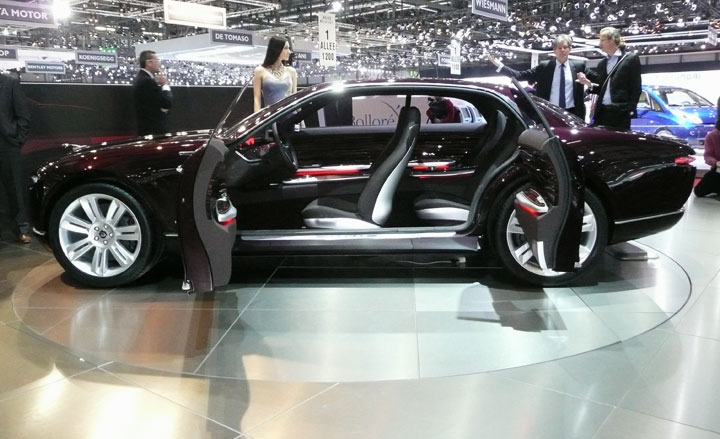
Bertone B99
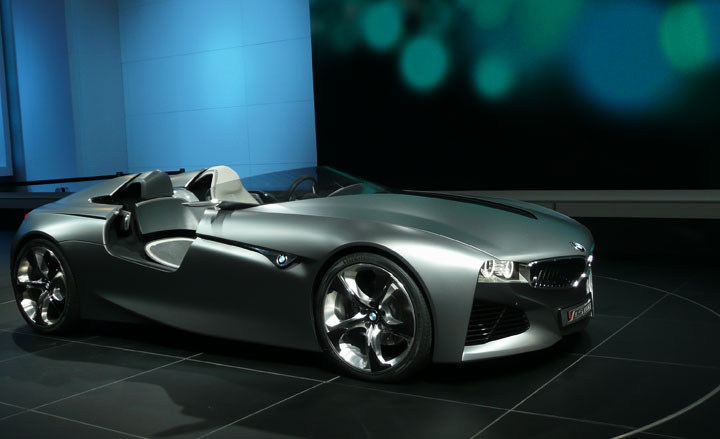
BMW Vision ConnectedDrive
Vision ConnectedDrive is the latest advanced design from BMW that seamlessly connects the driver, vehicle and the outside world. This is essentially a test bed of ideas on internet connectivity housed in a two-seater roadster with classic BMW proportions. Sensors in the headlamps and rear lights monitor traffic and antennas receive and transmit data; fibre optic wrap-around lighting inside make a visual differentiation between three areas - safety, convenience and infotainment with lighting red, green and blue to illustrate the flow of information through the vehicle.
BMW Group design director Adrian Van Hooydonk explains the thinking behind this car: 'We are showing how internet connectivity can enhance the driver experience and not take anything away. We're doing this in a very classic concept, a two seater roadster - we like this division of classic concept and modern technology.' Van Hooydonk admits that essentially this is about the user interface. The interior treatment is light and playful, made of layers that wrap around the driver and floating element in the dashboard that hints at the marque's next level of driver orientation.
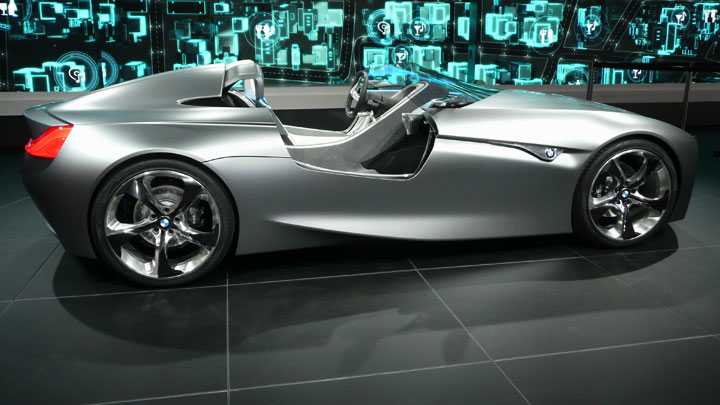
BMW Vision ConnectedDrive
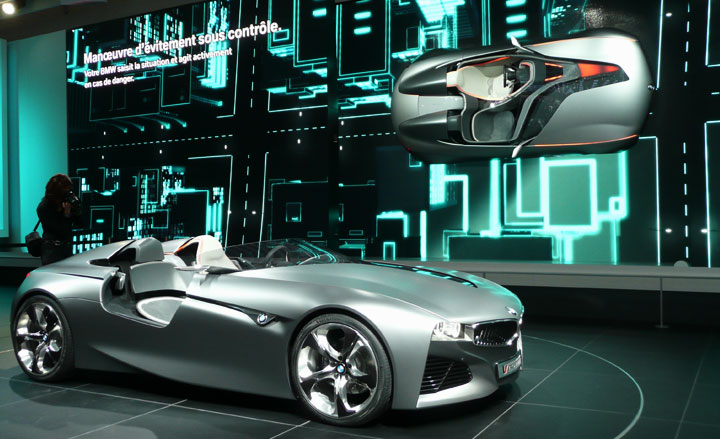
BMW Vision ConnectedDrive
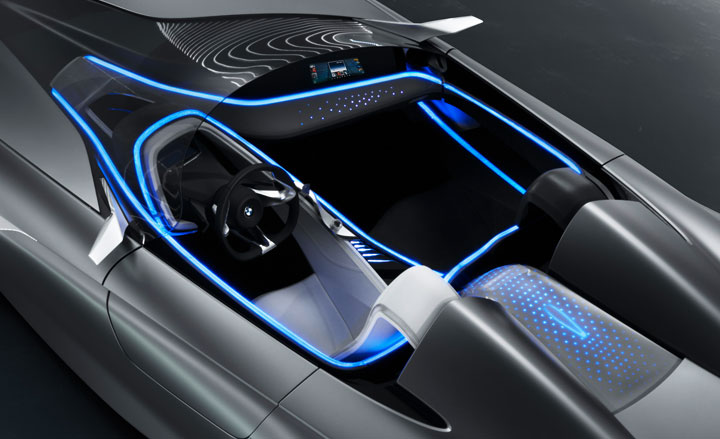
BMW Vision ConnectedDrive
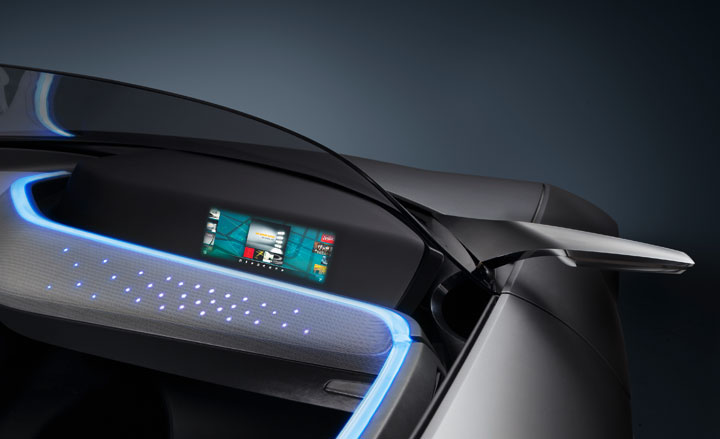
BMW Vision ConnectedDrive
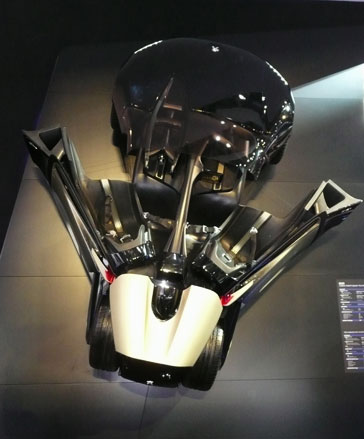
BMW Vision ConnectedDrive
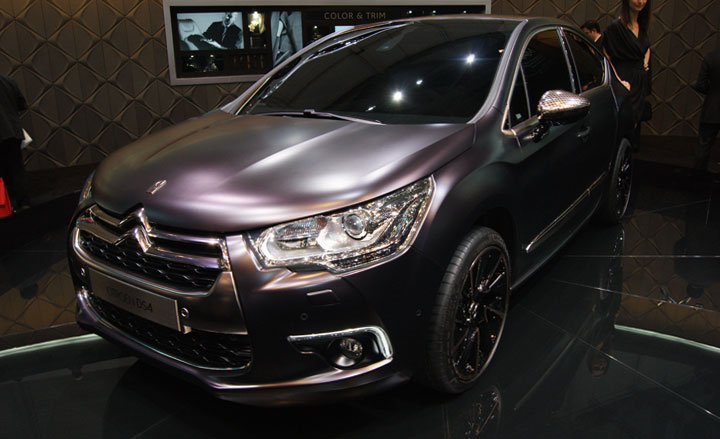
Citroën DS4
Citroën's DS4 concept is the second interpretation of the iconic 50s DS car. Design director Thierry Metroz explains that the DS range have to be more expressive than the mainstream models. 'We work like a sculptor, playing around with the surfaces so that it isn't boring and has a three-dimensional effect,' he says. 'It is very important to the DNA of Citroën to first explore a new silhouette and new proportions, then we explore new design and formal language for the body,' explains head of design Thierry Metroz. 'This was the same on the DS3, now the DS4 and will be on the DS5.' According to Metroz the firm is playing around with the satin body colours. Pointing to the purple DS4 on display he says: 'I think it works very well especially the way it contrasts with the shiny chrome elements. We like to follow fashion trends and we would like to work closely with fashion like we did last year with Lacoste.'
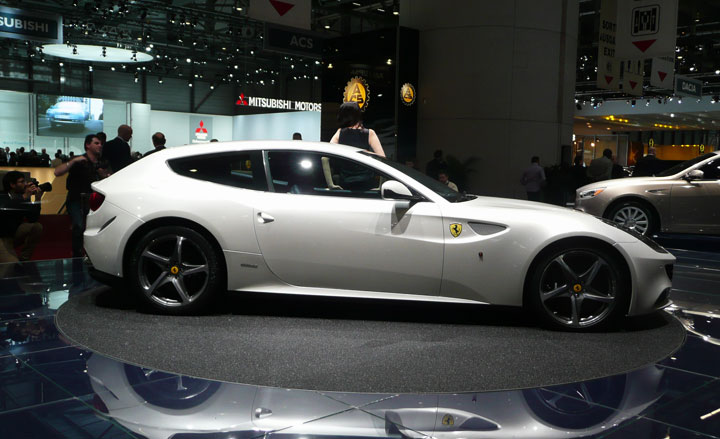
Ferrari FF
The FF GT features four seats - hence the name, which stands for Ferrari Four - and it features the first four-wheel drive system for the marque. Replacing the 612 Scaglietti, the Pininfarina-designed car aims to attract new customers.
Price: Circa £225,000
Delivery date: TBC
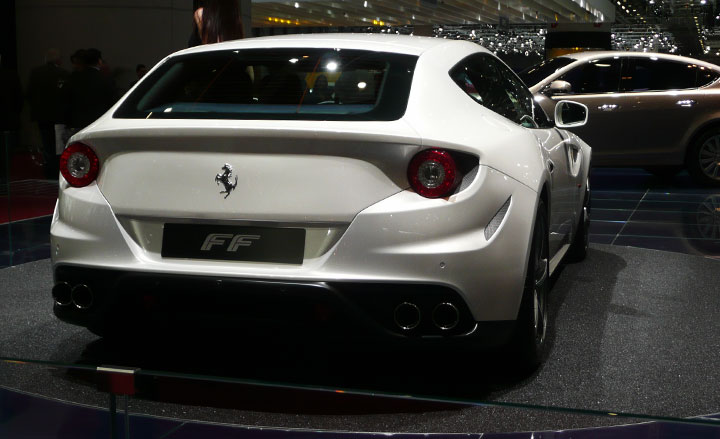
Ferrari FF

Ferrari FF
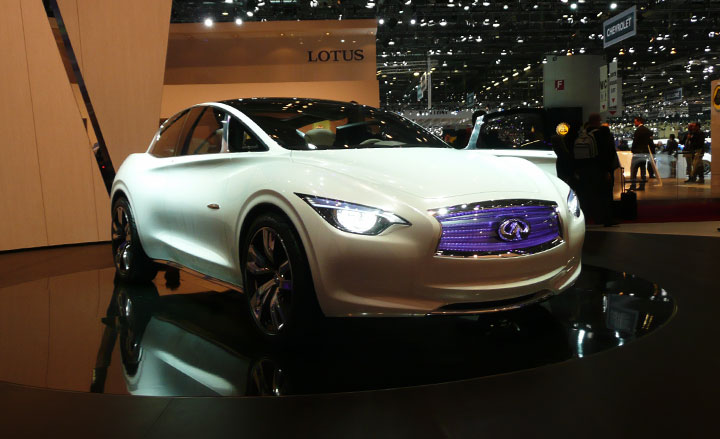
Infiniti
Infiniti's Etherea concept previews the baby sub-G Infiniti. An extension of the design language introduced on last year's Essence, it shows the Japanese marque's confident design language aimed at Europe.

Infiniti
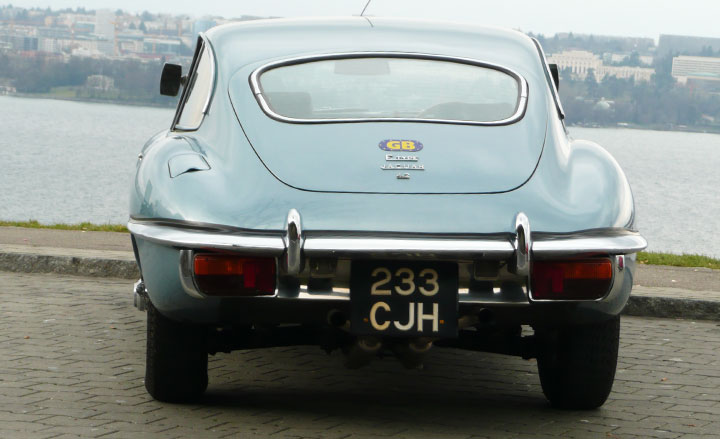
Jaguar E-Type
Jaguar showcased the classic E-Type in time for the car's 50th birthday. Over 70,000 were sold between 1961 and 1974, and competitively priced around £2000; it was an accessible dream and became one of the symbols of the 60s. 'It is impossible to overstate the impact the E-Type had when it was unveiled in 1961,' says Jaguar design director Ian Callum. 'Here was a car that encapsulated the spirit of the revolutionary era it came to symbolise. 'The E-Type is a design that even today continues to inform the work we do in styling the Jaguars of the future. It is the spirit of the E-Type that I try to capture in our cars and I strongly believe the CX75 has the expression of the E-Type.'
www.jaguar.com
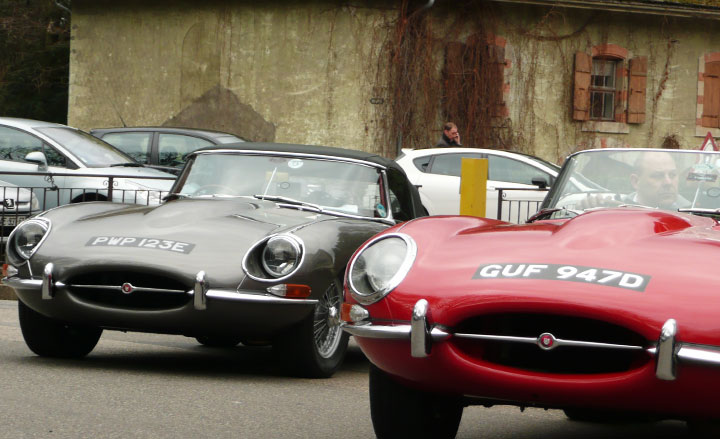
Jaguar E-Type
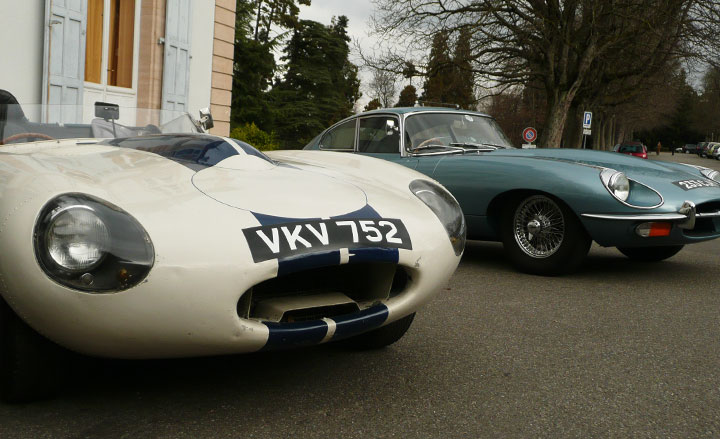
Jaguar E-Type
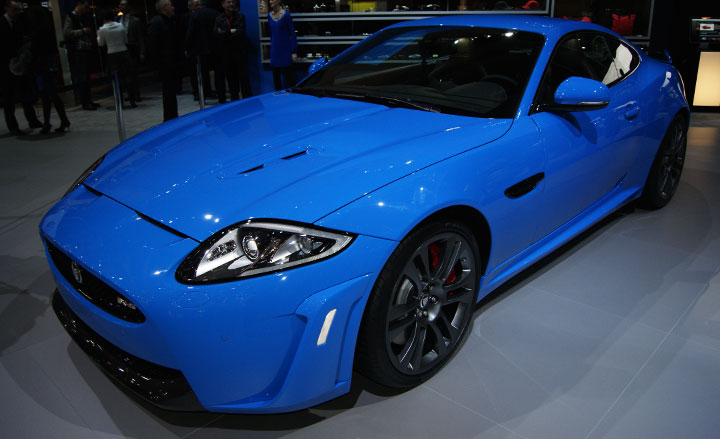
Jaguar XKR-S
Jaguar's XKR-S GT is essentially a high-performance XK. It is undeniably powerful: 542bhp and torque swells to 501lb ft, claims to be the fastest production Jaguar sports car, yet boasts one of the cleanest performance figures in its class. Design director Ian Callum explains that a performance car manufacturer like Jaguar has to, in a sense, prove that it is capable of making such cars. 'Last year's CX-75 electric concept car was our attempt at an advanced car to demonstrate you can have the performance and style and almost outrageous supercar design but at the same time have proper green credentials,' he says admitting that if given the green light he would like to produce this car. 'Everything on this XKR-S package stems from the engine, and the package is all driven from that point. The moment you take that away your paradigm is shifted entirely,' he says.
Price: £97,000
Sale date: September 2011
www.jaguar.com
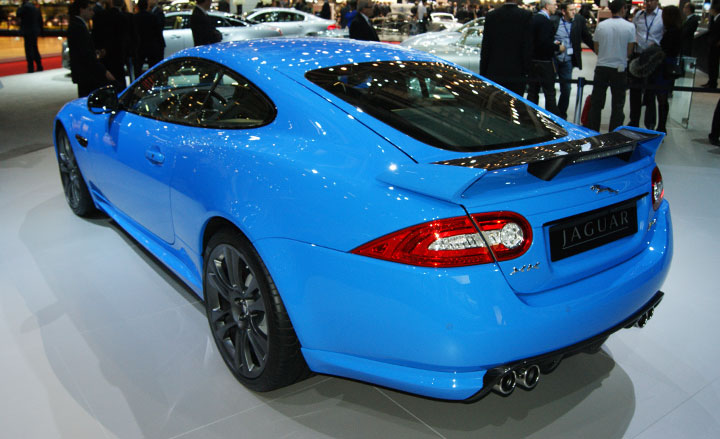
Jaguar XKR-S
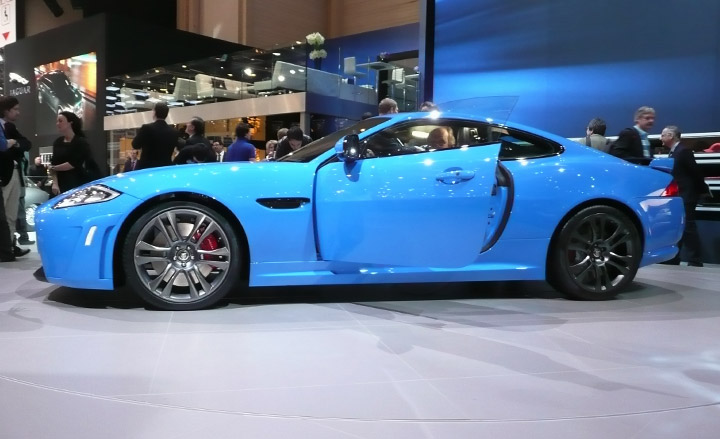
Jaguar XKR-S
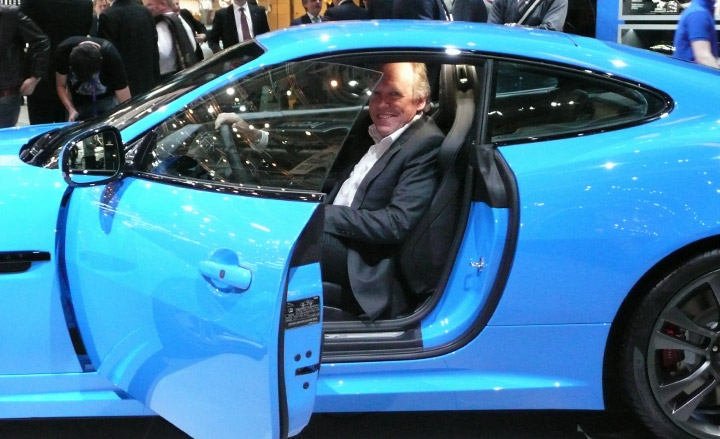
Ian Callum, Jaguar design director, in the Jaguar XKR-S
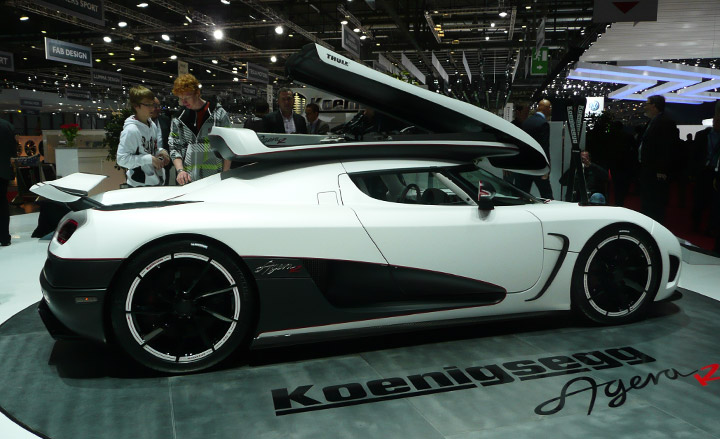
Koenigsegg Agera R
The Koenigsegg Agera R is a hypercar, featuring a carbon fibre monocroque. It is capable of accelerating to 62mph is only 2.9 seconds.
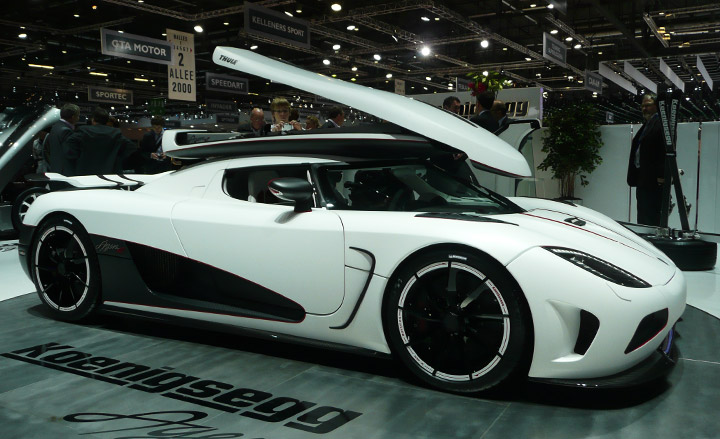
Koenigsegg Agera R
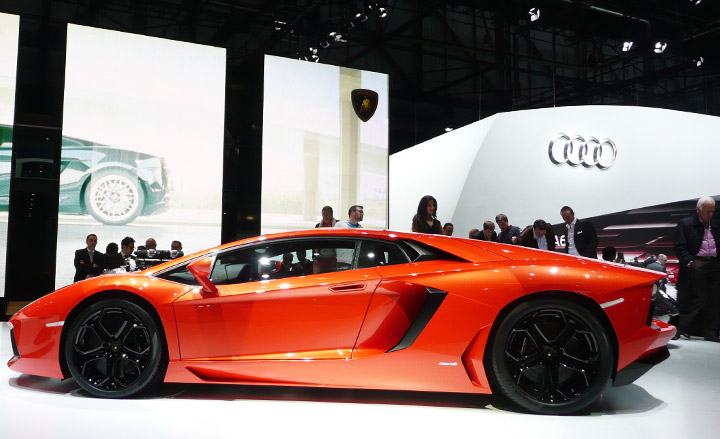
Lamborghini Aventador LP-7004
Lamborghini's Aventador LP-7004 is another supercar proposition by the Italian marque that replaces the outgoing Murcielago. The wedged shape car features a carbon fibre chassis.
Sale date: Late summer 2011
Price: Circa £220,000
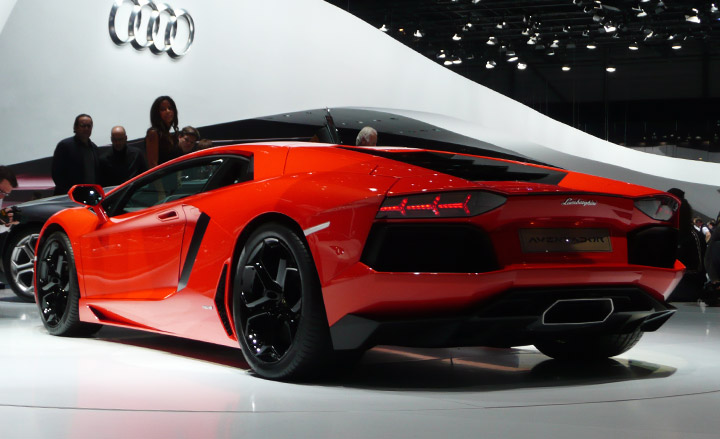
Lamborghini Aventador LP-7004
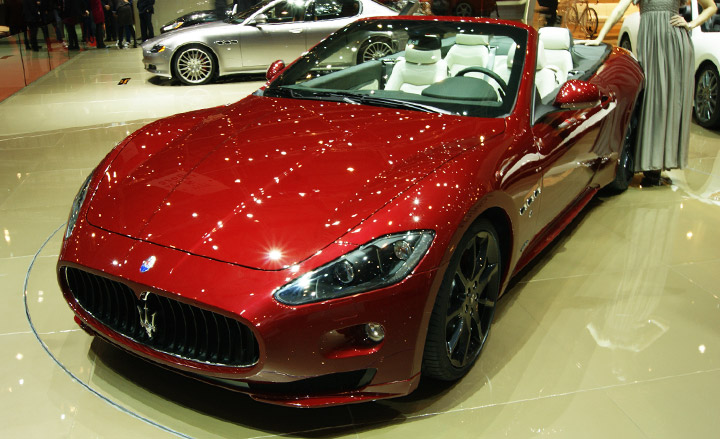
Maserati Grancabrio Sport
The Maserati Grancabrio Sport is a faster version of the 2009 Grancabrio drop-top GT.
Price: TBC
Sale date: October 2011
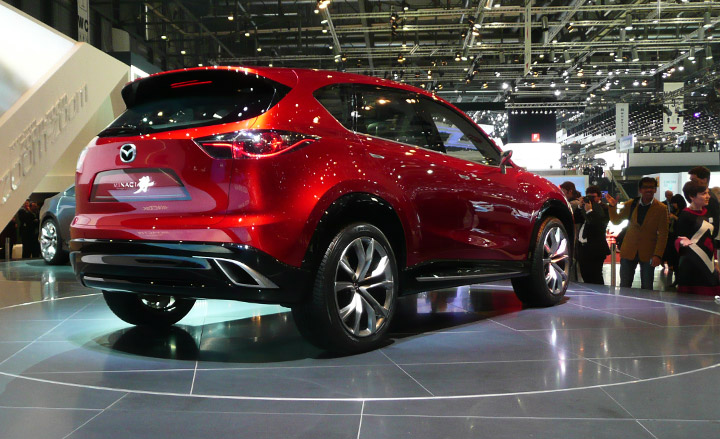
Mazda
Mazda's Minagi is a compact crossover concept that hints at the new CX-5 and is the second concept to come out of the new Shinari design language introduced by design director Ikuo Maeda in 2009. Meaning 'soul of motion' this new philosophy aims at a contemporary Japanese aesthetic for a brand that has struggled to find a unique identity. Minagi itself roughly translates to internal power and Maeda says the car is very close to the final production. 'The grille design is very much part of the new language as is the body design which has been almost twisted, this is also something that is part of the new design theme,' he says.
Sitting side-by-side the Hakaze concept - a car that was unveiled last year - the Japanese identity is apparent in the treatment of the surfacing 'taking the fat off the body and making it tense,' as Maeda puts it.
www.mazda.com
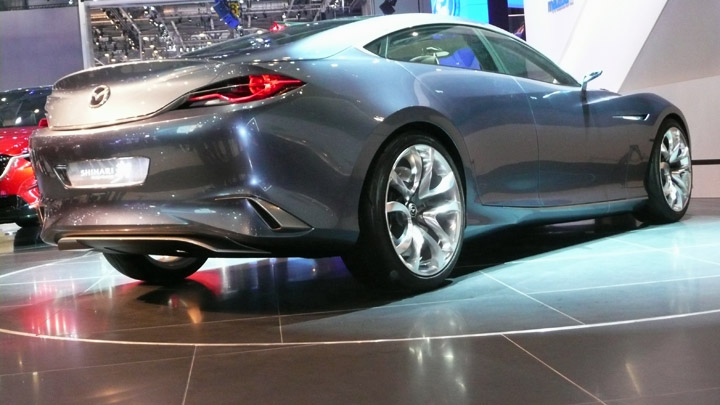
The first concept to come out of the Shinari design language that will form the basis for all Mazda cars.
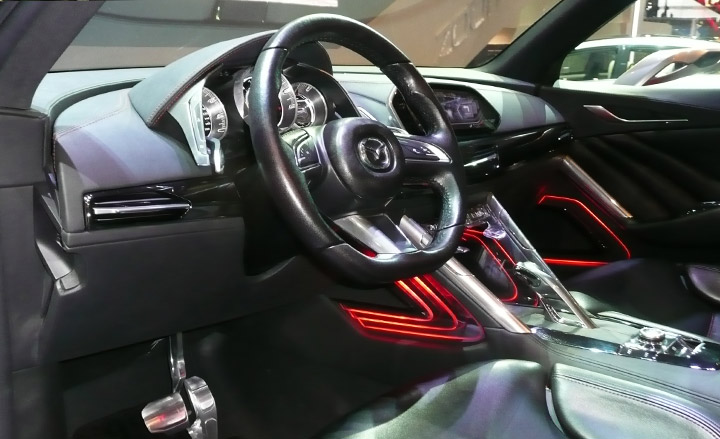
Mazda Minagi interior
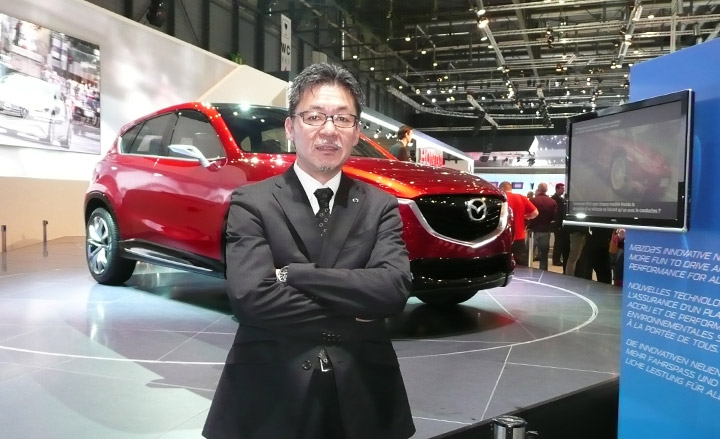
Ikuo Maeda, Mazda design director

Mercedes-Benz SLK
This is the third-generation SLK production car that marries the overall proportions of the previous model with the more striking design language introduced on the CLS - the focus being a strong sculptural grille.
Sale date: June 2011
Prices: TBC
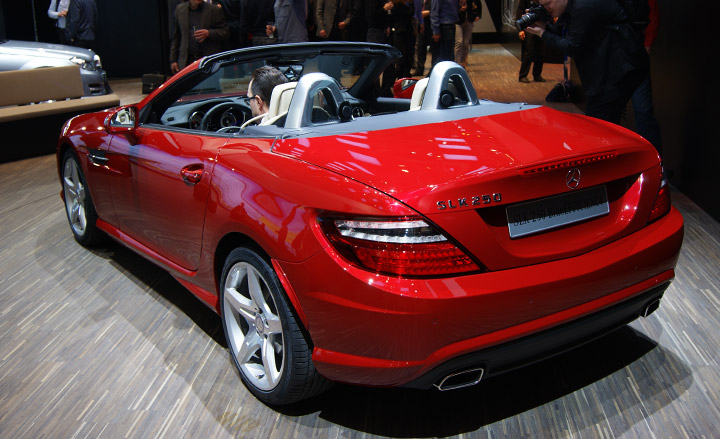
Mercedes-Benz SLK
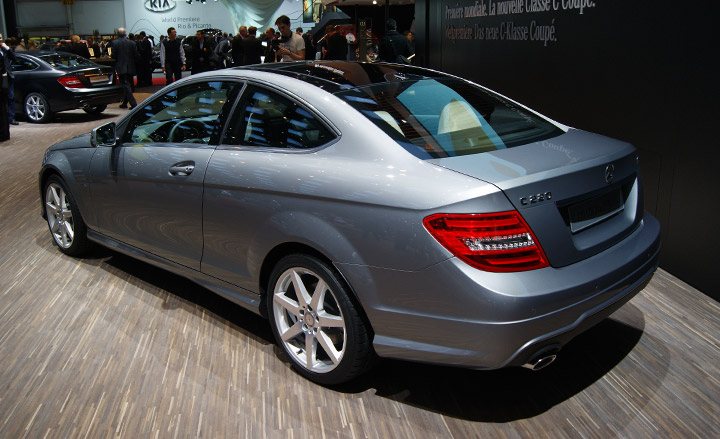
Mercedes-Benz C-Class
The Mercedes-Benz C-Class expands the range with a two-door coupé that like the SLK extends the CLS design language.
Sale date: June 2011
Prices: Circa £25,500
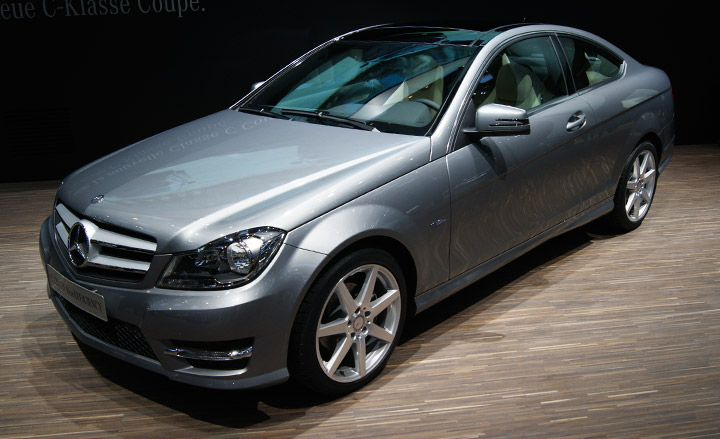
Mercedes-Benz C-Class
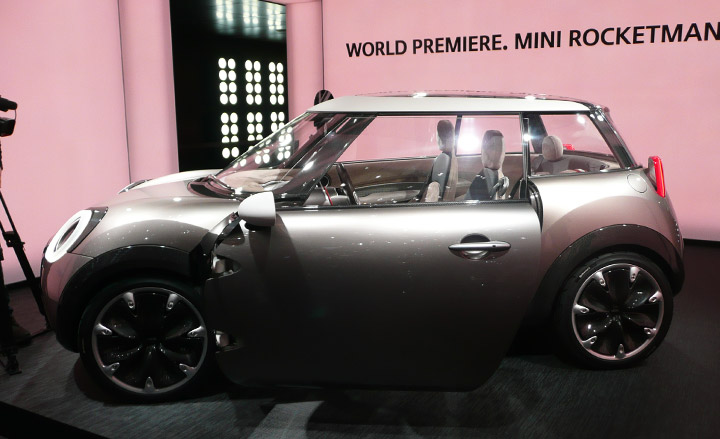
Mini Rocketman
Mini's Rocketman concept is the first small Mini by the BMW-owned company. Design director Adrian Van Hooydonk admitted that he has wanted to make a Mini of this size and flexibility for some time and would make it if they get the go-ahead. Measuring 3419mm long - the current hatchback is 3723mm - the Rocketman is within a few centimetres of Alec Issignois's 1959 original. It features innovative double-hinged doors that make for easy entry. There are four seats one of the rear ones removable for a three or four-seat configuration. The clever boot has a traditional roof-hinged one and an extra area underneath that looks and functions very much like a drawer to hold objects as large as a surfboard.
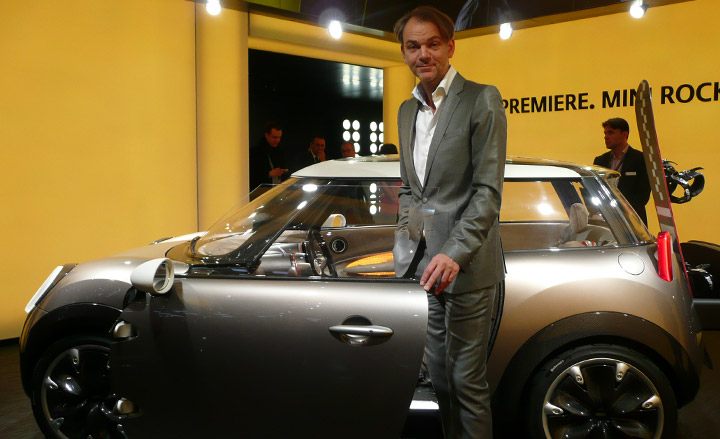
Adrian Van Hooydonk BMW Group design director, with the Mini Rocketman
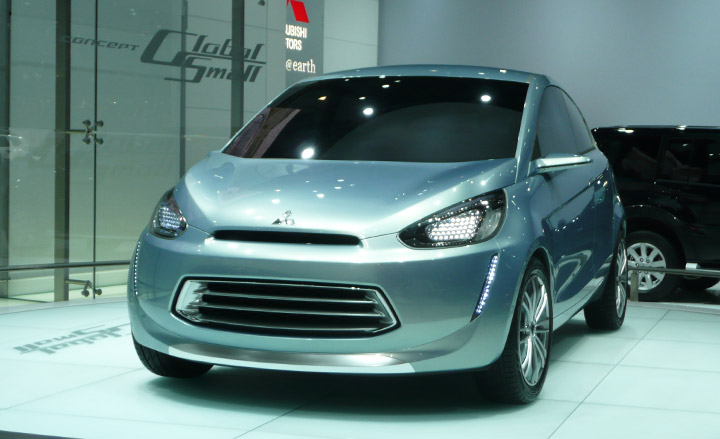
Mitsubishi Global Small Concept Car
Mitsubishi's Global Small Concept Car is one of 12 vehicles on show that previews its vision for future city small car mobility.
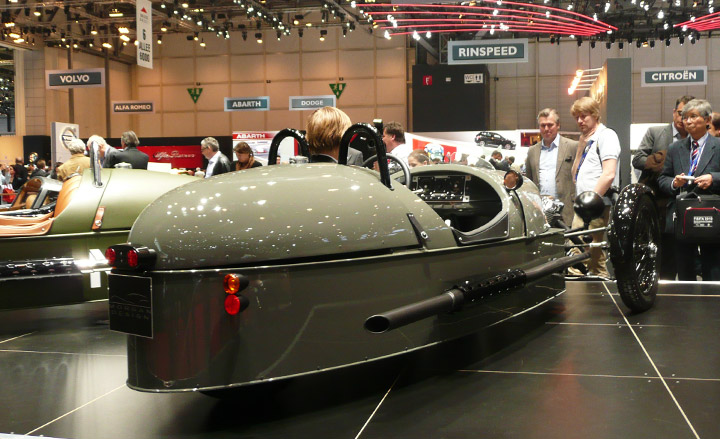
Morgan Threewheeler
British niche automobile maker Morgan harked back to its heritage with the Threewheeler, albeit with a modern powertrain. The firm started out making three-wheelers in 1909, completing as many as 30,000 by 1953, one even winning the French Grand Prix in 1913.
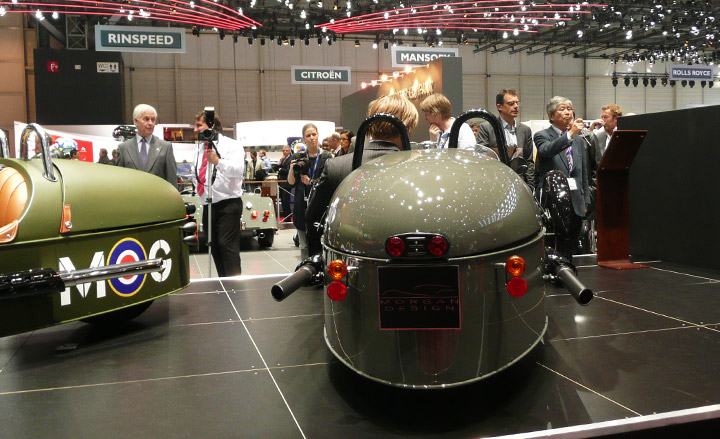
Morgan Threewheeler
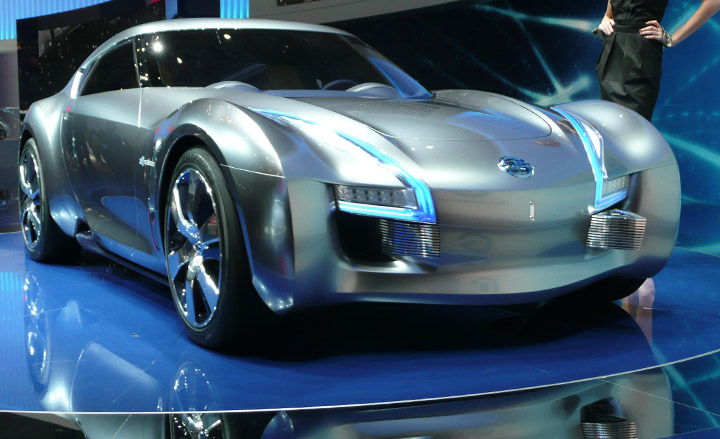
Nissan Esflow
Nissan's Esflow concept has been designed to show how the electric powertrain can liberate the designer to create interesting shapes as well as prove that clean driving should not be limited to small city cars. Head of Nissan Design Europe Victor Nacif explains: 'We wanted to try to work with more classic sports cars proportions and balance even though it looks friendly.' The Esflow uses the same electric technology as the Leaf. 'There is nothing here that is difficult to do and nothing that is part of a dream world,' says Nacif who took over the running of the Paddington studio last year.
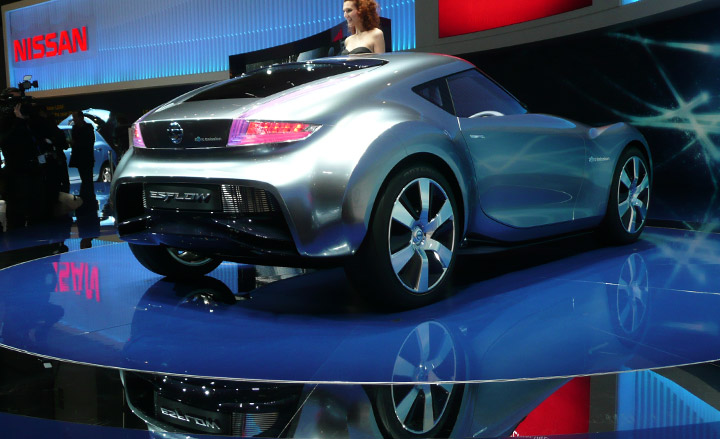
Nissan Esflow
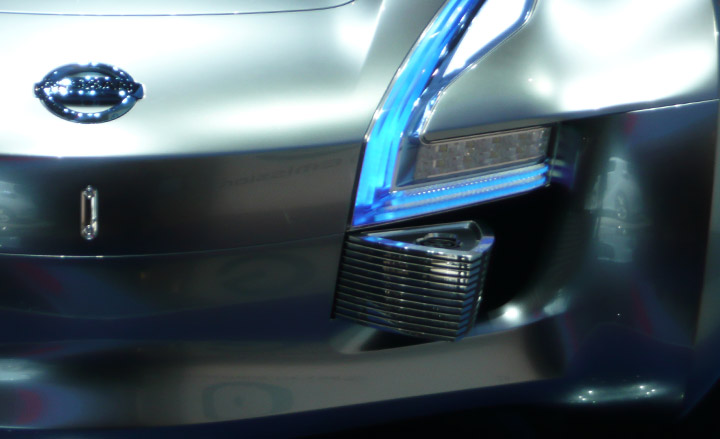
Nissan Esflow
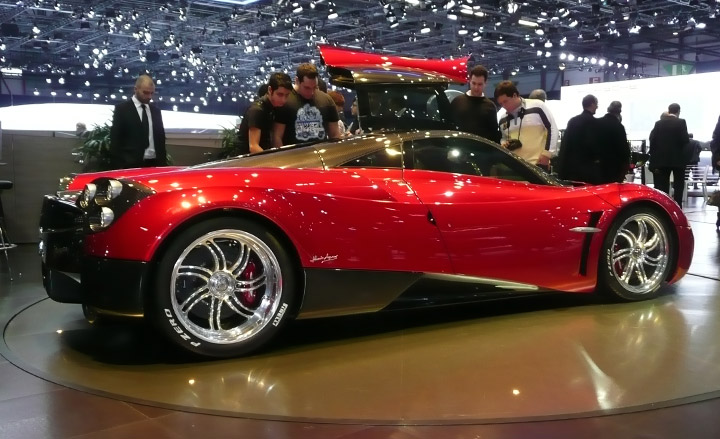
Pagani Huayra
Niche Italian automobile maker Pagani replaces the Zonda 12 with the Huayra, a bespoke supercar pitched at wealthy collectors.
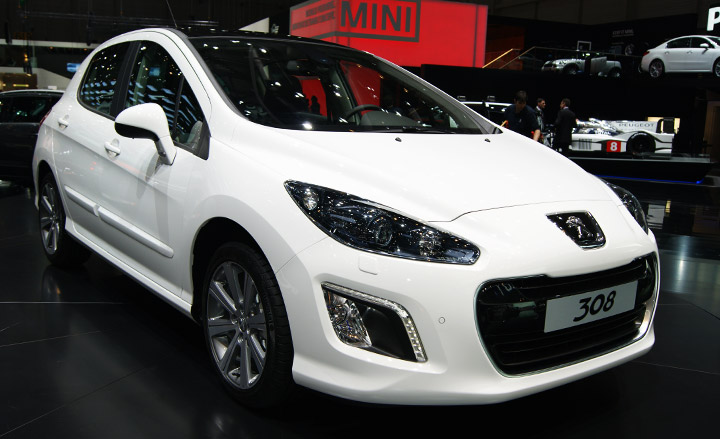
Peugeot 308
The 308 facelift follows from the 508 design that translates SR1 concept car design language to the marque's production car portfolio.
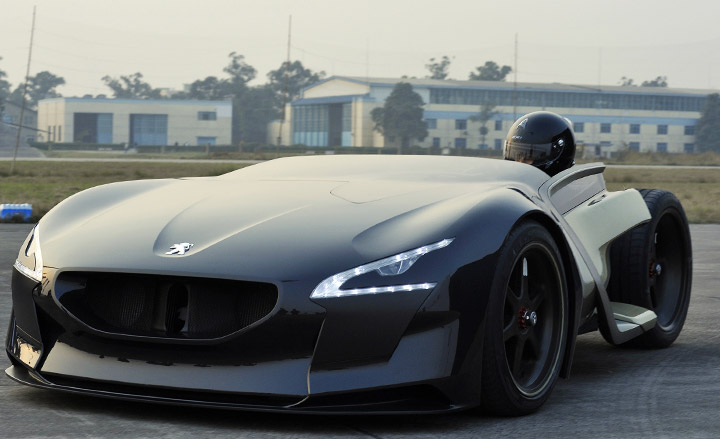
Peugeot EX1
Peugeot designed the EX1 racing car to show how fast an electric car can go, and how desirable clean emission driving can be. The car is essentially designed around the electric engine, the battery and the very low driving position. 'It was like a puzzle,' says design director Gilles Vidal. 'The structure, body and interior design is almost one piece.'

Peugeot EX1
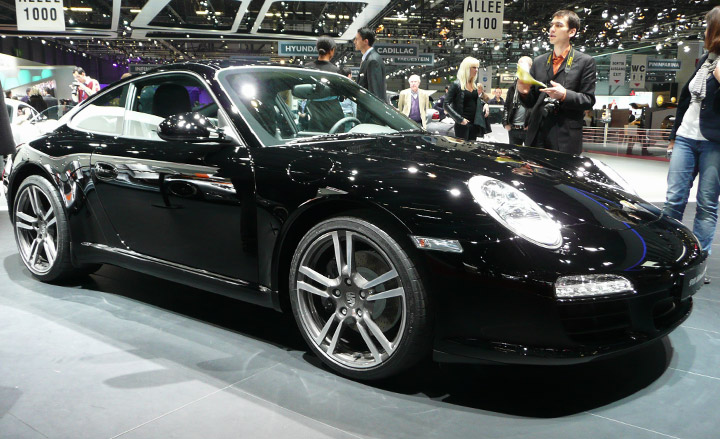
Porsche 911 Black Edition
The Porsche 911 Black Edition is the same size at the regular 911, but the new package sees brake callipers, door rims, sports steering wheel, instrumentation and interior badging decked out in basalt black. Only 1,911 will be made.

Porsche Panamera hybrid
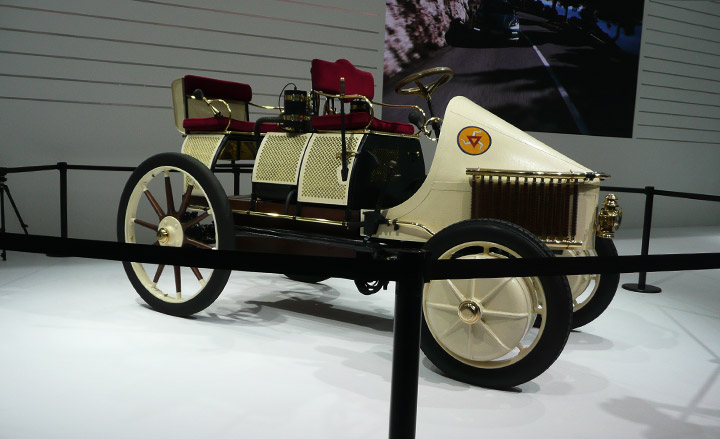
Porsche Semper Vivus
The Porsche Museum in Stuttgart painstakingly recreated the 1900 Semper Vivus for the Geneva Show, the first functional hybrid petrol-electric car built by Ferdinand Porsche. It took four years to build the car.
www.porsche.com/international/aboutporsche/porschemuseum
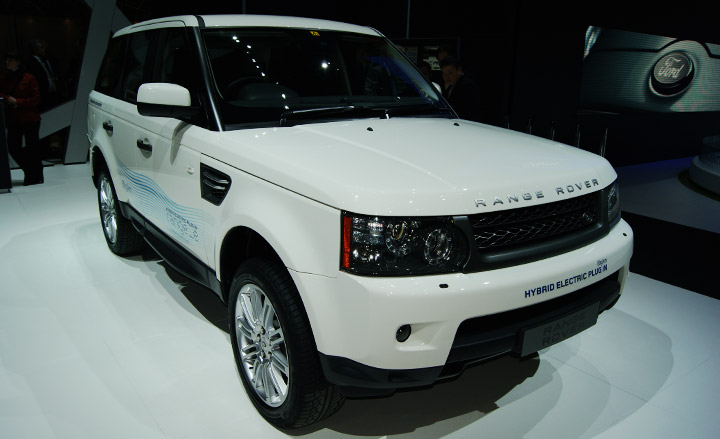
Range Rover e
This is the Range Rover e, Land Rover's entry into the electric/hybrid game.
www.landrover.com
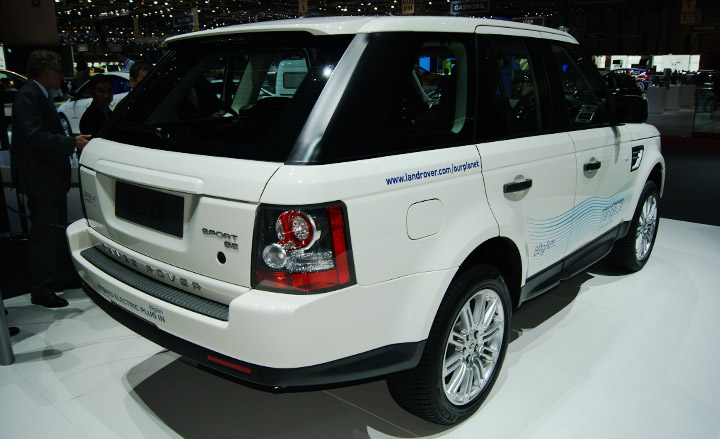
Range Rover Evoque

Range Rover Evoque
Land Rover showed the Range Rover Evoque coupé and five-door with customer personalisation options for the first time at Geneva. The Evoque is the first production car under design director Gerry McGovern and marks a fresh design language for the marque. 'When I came to Land Rover I set about looking at what we have in terms of design strategy and design philosophy,' he explains. 'Clearly a lot of the reasons why Land Rovers and Range Rovers looked the way they did is because of what they did. There was a whole collection of design cues that had evolved over many years. The question I posed was how relevant will this be in a future context.' McGovern's team deliberately set out to find a fresh design language based on a new approach to functionality. 'It had to be more tailored towards customers' changing lifestyles,' he says referring to buyers who don't necessarily need off-roader capabilities but like the look and the secure feeling of off-roaders. McGovern explains that personalisation has always been an afterthought for the marque. By offering three main design themes - Pure, Prestige and Dynamic - the customer can then use this as a base to build their own customised vehicle without sacrificing the essence of Evoque design. 'You need to give the customer enough flexibility so they feel they are contributing towards creating something that is personal for them but at the same time do it in a way that protects the design integrity,' he says.
Price: Circa £30,000
Sale date: Summer 2011
www.landrover.com
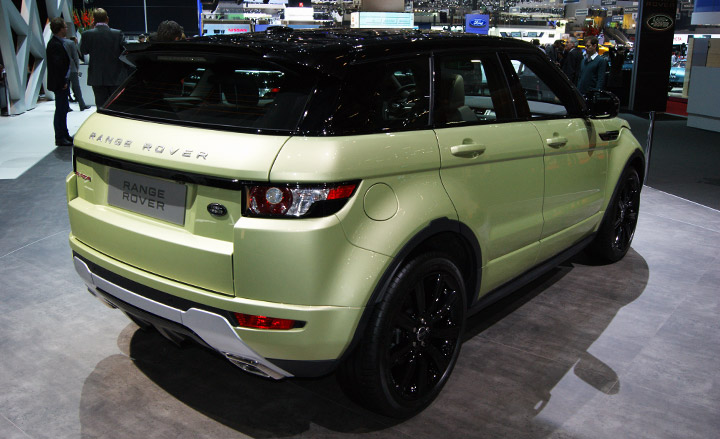
Range Rover Evoque
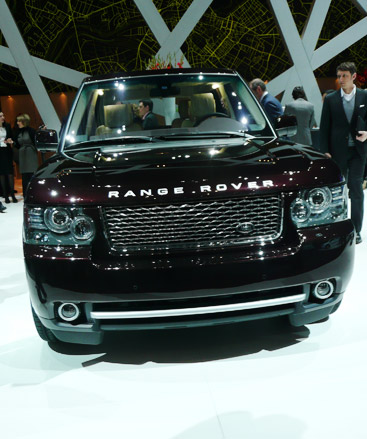
Range Rover Autobiography Ultimate
The Range Rover Autobiography Ultimate is the marque's highest expression of interior luxury featuring a pair of iPads as standard for rear seat passengers, soft leather, Kalahari wood veneers, and a boot lined with a teak decking that is inspired by Wally yachts.
Range Rover Autobiography Ultimate
Price: Circa £120,000
Sale date: TBC
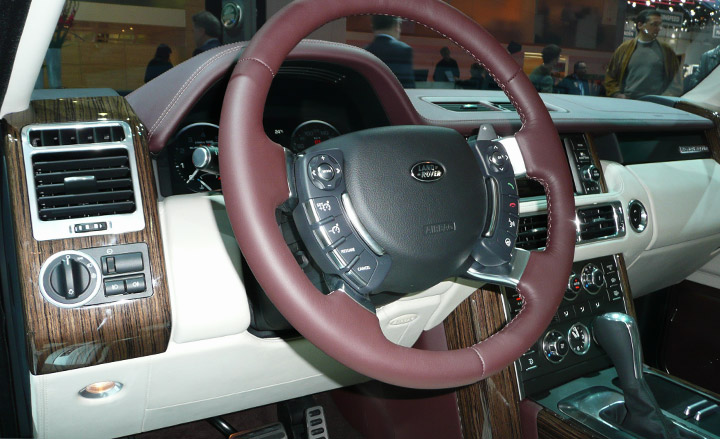
Range Rover Autobiography Ultimate
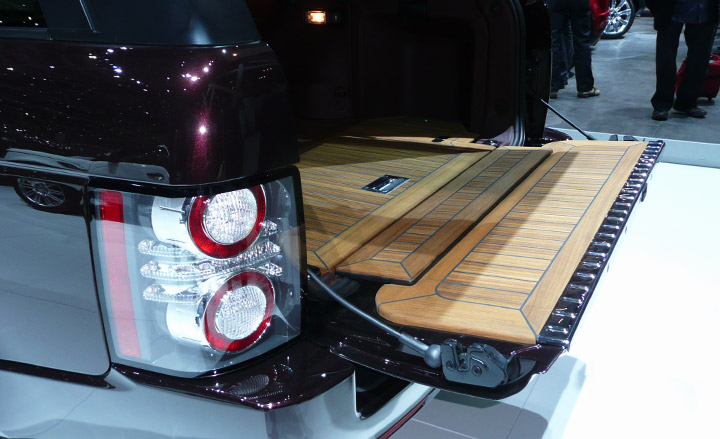
Range Rover Autobiography Ultimate
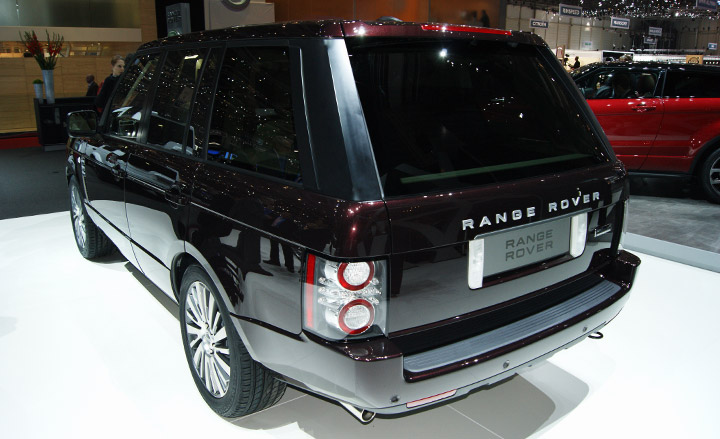
Range Rover Autobiography Ultimate
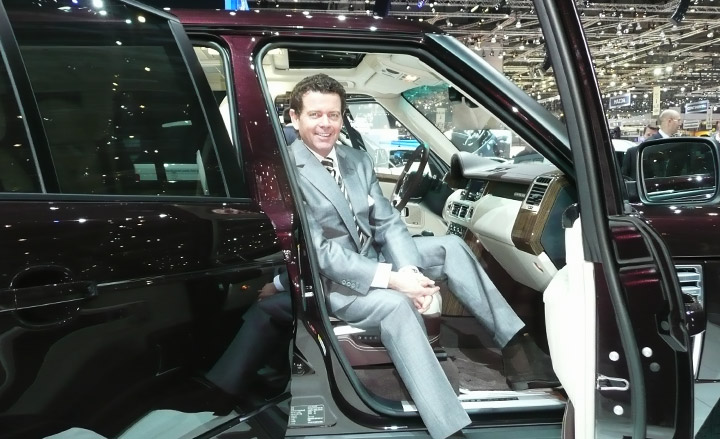
Gerry McGovern, Land Rover design director, in the Range Rover Autobiography Ultimate
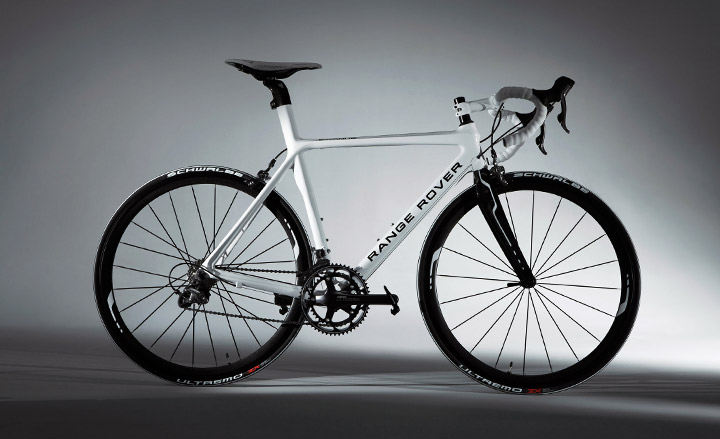
Range Rover Evoque Bike
Range Rover Evoque Bike concept is light and nimble, and created by the Land Rover design team. The central element is a high modulus carbon fibre monocoque frame, crafted by Karbona using techniques derived from Formula 1.
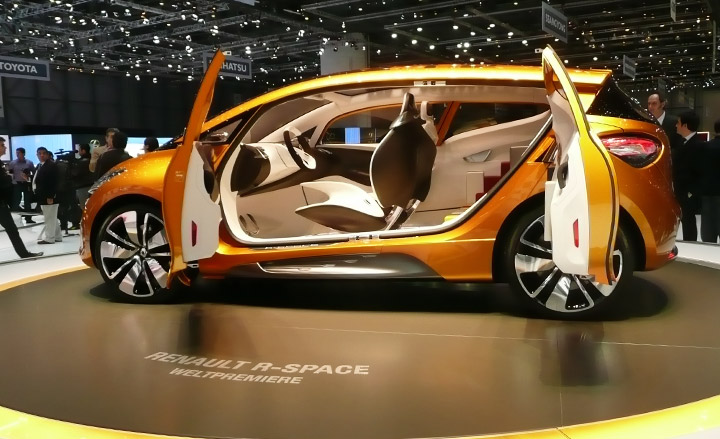
Renault R Space
The Renault R Space concept is the third car to express the French marque's current design thinking that focuses bringing more human values to the brand. 'The DeZir represents love, Captur simplicity and R-Space family,' says Fabrice Pouille responsible for the exterior design of this car. 'The family aspect of Renault is very important but we wanted to bring something new to the formal language - new shapes and new volumes as seen on the DeZir and now on this family car.' The R Space represents the feeling of exploration and with rear seats made of configurable boxes, is a playful small family car proposition. 'We wanted a desirable exterior but a family interior,' says the young designer. 'Everything is symbolic about the family. For instance the doors work like hands, coming together to protect a pregnant woman.'
www.renault.com
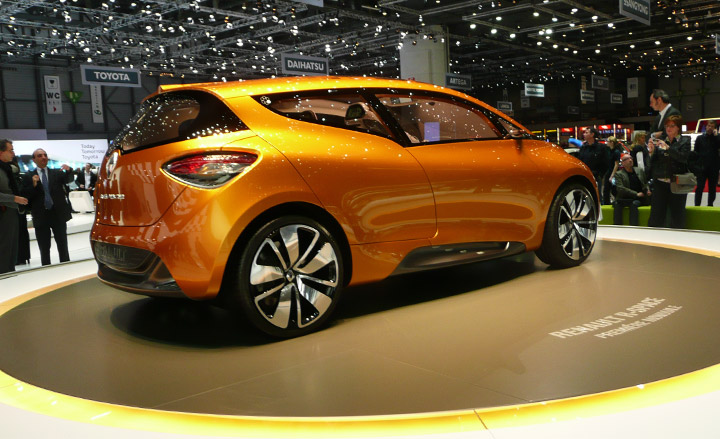
Renault R Space
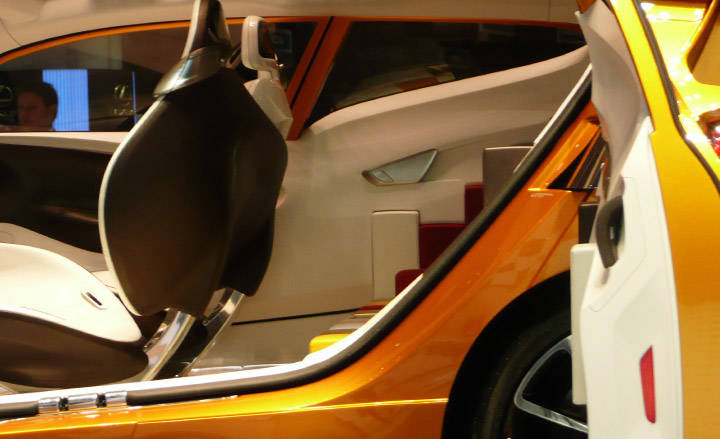
Renault R Space
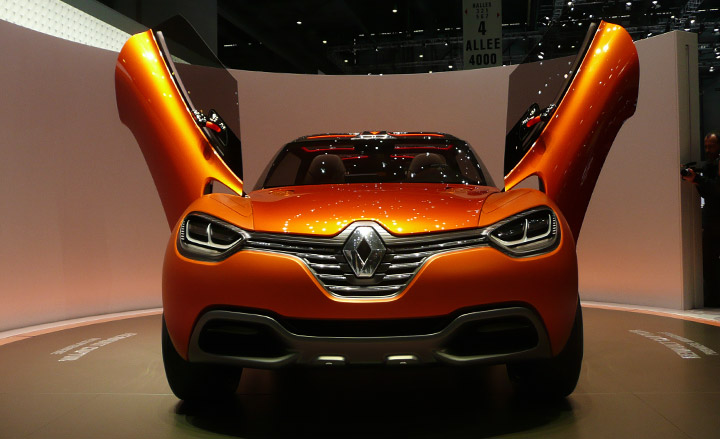
Renault Captur
Renault's second concept car Captur represents simplicity.
www.renault.com
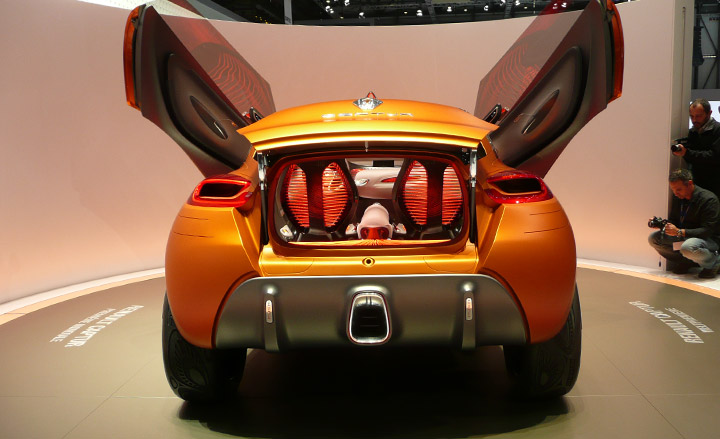
Renault Captur
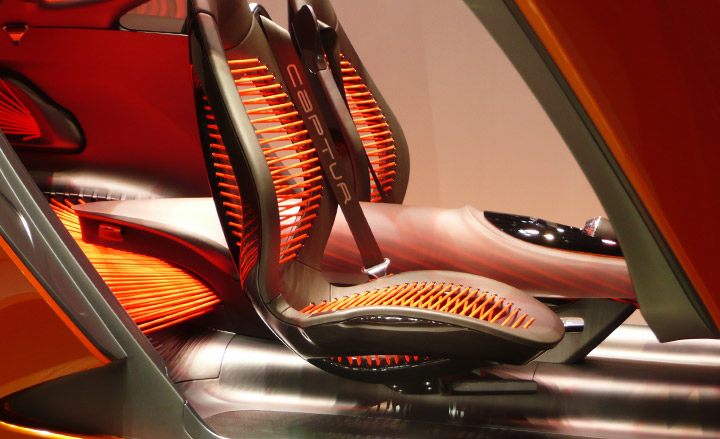
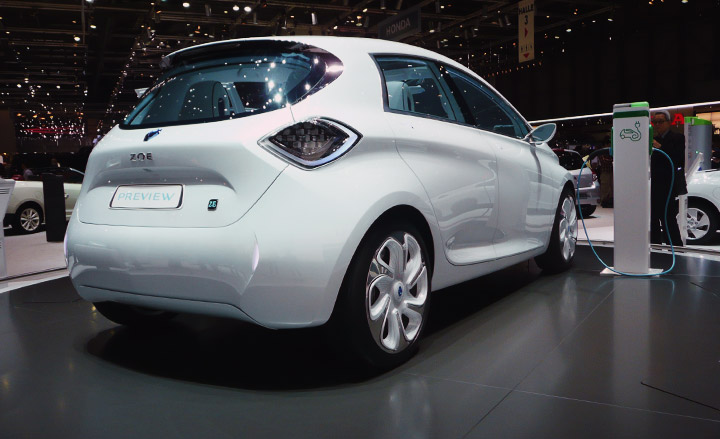
The Renault Zoe electric production car
www.renault.com
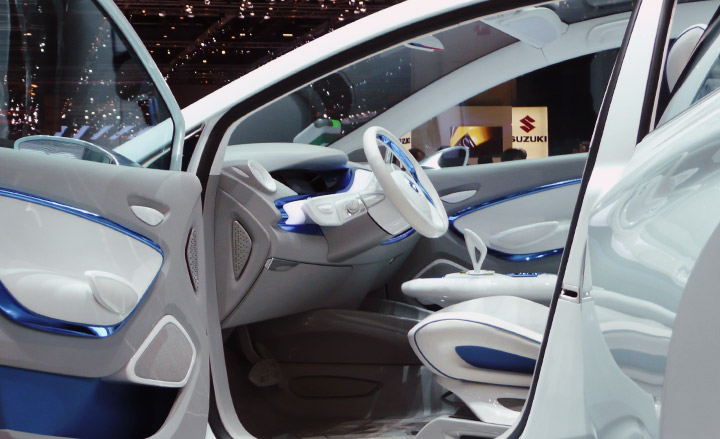
Renault Zoe electric production car
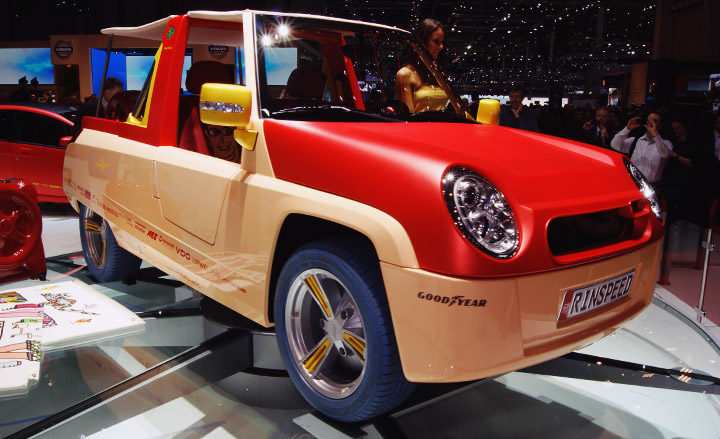
Rinspeed Bamboo
The Rinspeed Bamboo concept features an interior made of bamboo, the marque stating it can imagine Bridget Bardot behind the wheels. It is like a golf buggy and offers four seats and open air driving and is a tribute to the 70s.
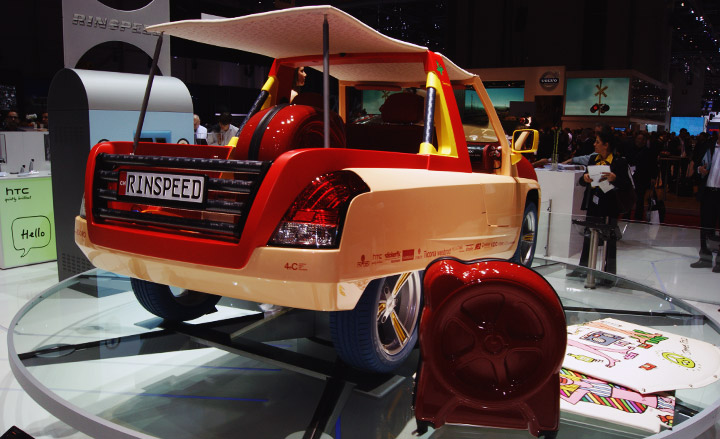
Rinspeed Bamboo

Saab Phoenix
The Saab Phoenix concept conveys the newly independent firm's bold design language under the design direction of former Bertone designer Jason Castriota. He calls it 'aeroemotional' design - the dramatic coupé design reflecting cues from Saab's Scandinavian heritage and aircraft design.
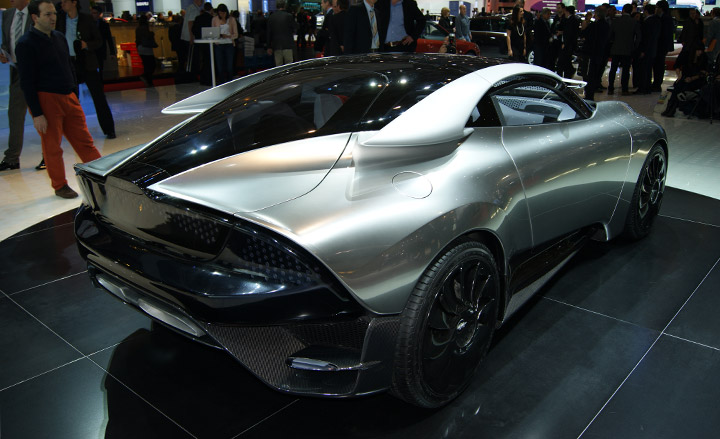
Saab Phoenix
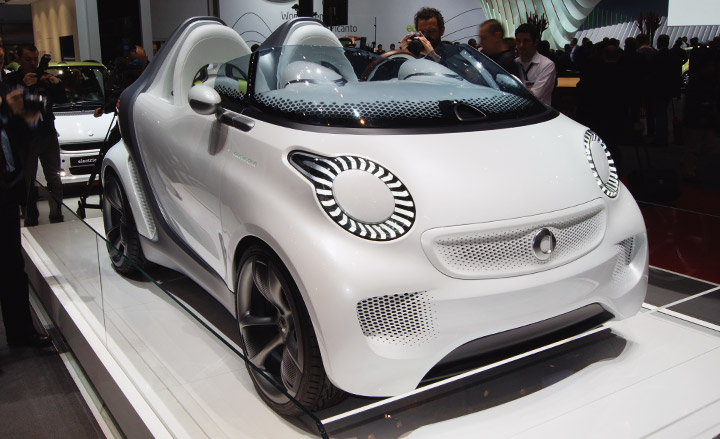
Smart Forspeed
The Smart Forspeed is purely conceptual study for electric urban mobility.
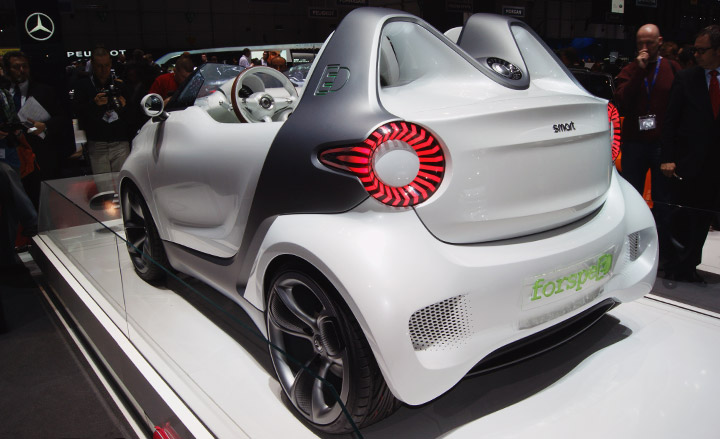
Smart Forspeed
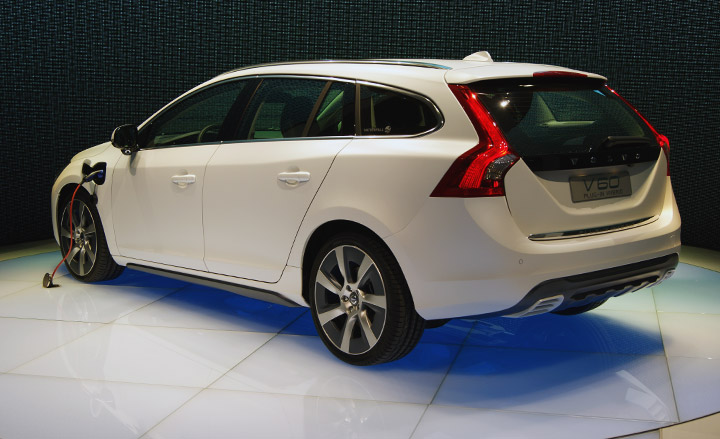
Volvo V60
The volvo V60 Plug-in Hybrid is a virtually production-ready car with carbon dioxide emissions below 50 g/km.
www.volvo.com
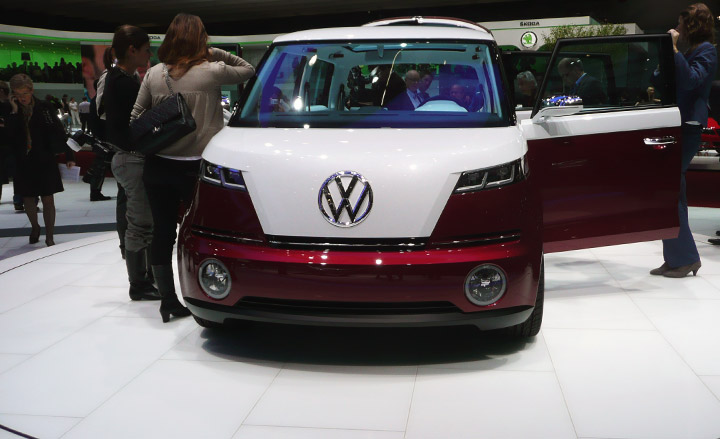
Volkswagen Bulli
The VW Bulli is a modern, slightly shrunken take on the iconic 50s Camper van aimed at today's younger buyer who wants to multi task their car as mobile office. Around the same size as four-door Polo, this is a six-seater with three front and three rear seats that fold flat for a six-foot bed. The Bulli is still conceptual but if public opinion is positive the car may be produced in the next few years.

Volkswagen Bulli
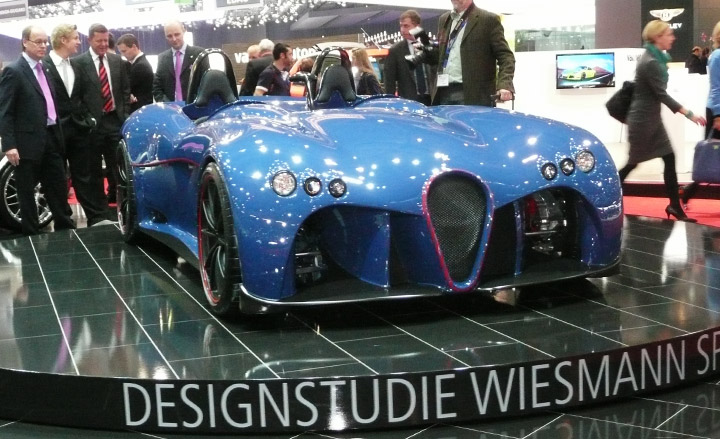
Wiesmann Spyder
Dutch firm Wiesmann's Spyder Concept is a small, lightweight car with no windshield.
A writer and editor based in London, Nargess contributes to various international publications on all aspects of culture. She is editorial director on Voices, a US publication on wine, and has authored a few lifestyle books, including The Life Negroni.
-
 The Subaru Forester is the definition of unpretentious automotive design
The Subaru Forester is the definition of unpretentious automotive designIt’s not exactly king of the crossovers, but the Subaru Forester e-Boxer is reliable, practical and great for keeping a low profile
By Jonathan Bell
-
 Sotheby’s is auctioning a rare Frank Lloyd Wright lamp – and it could fetch $5 million
Sotheby’s is auctioning a rare Frank Lloyd Wright lamp – and it could fetch $5 millionThe architect's ‘Double-Pedestal’ lamp, which was designed for the Dana House in 1903, is hitting the auction block 13 May at Sotheby's.
By Anna Solomon
-
 Naoto Fukasawa sparks children’s imaginations with play sculptures
Naoto Fukasawa sparks children’s imaginations with play sculpturesThe Japanese designer creates an intuitive series of bold play sculptures, designed to spark children’s desire to play without thinking
By Danielle Demetriou
-
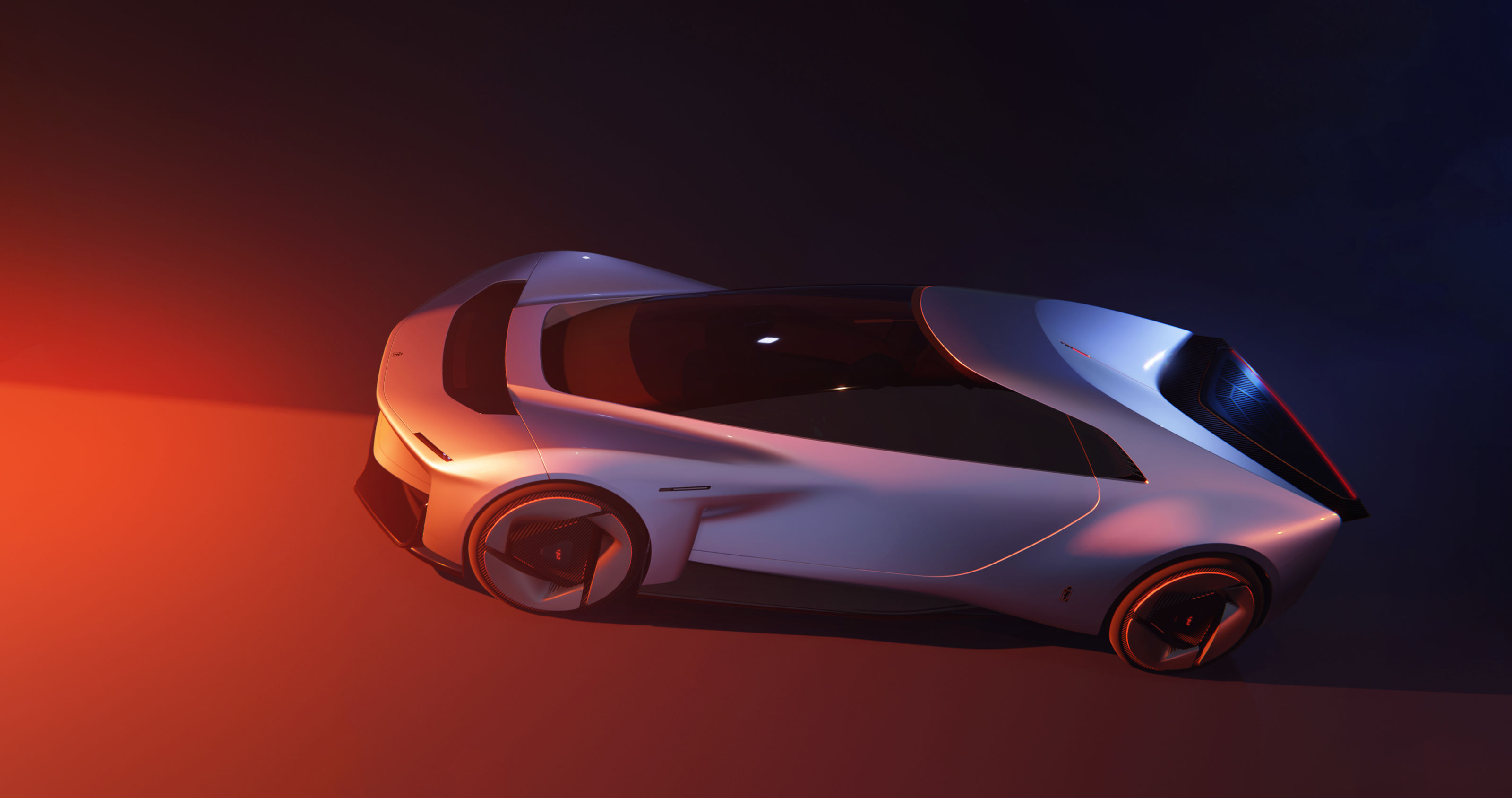 The return of the Geneva Motor Show (to Geneva) as a place for global debuts
The return of the Geneva Motor Show (to Geneva) as a place for global debutsThe Geneva Motor Show is back. After 2020’s pandemic cancellation and an ‘exported’ event in Qatar in 2023, the organisers of GIMS 2024 had their work cut out to stay relevant. Here are our highlights
By Guy Bird
-
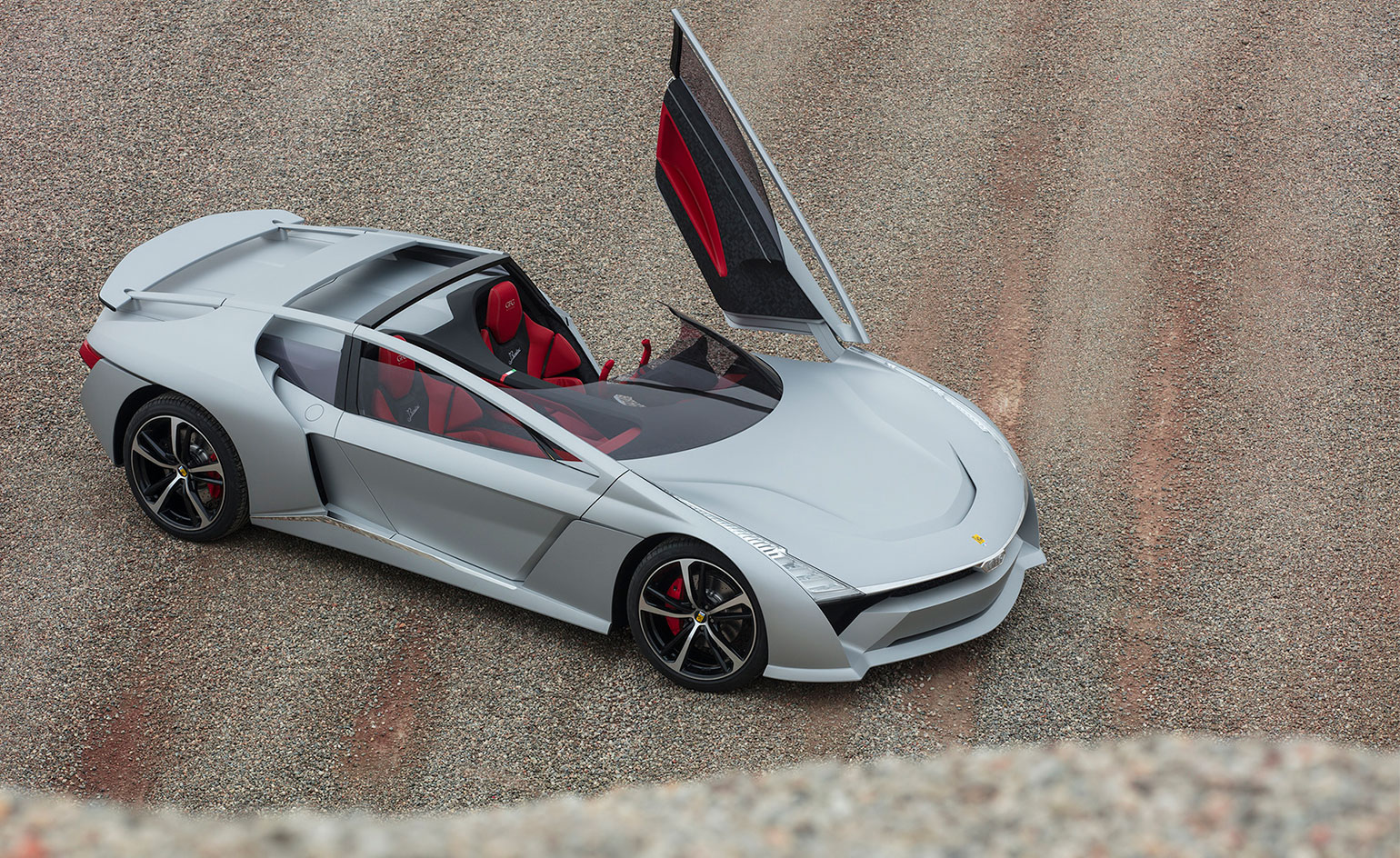 Geneva Motor Show digital showcase: the luxury edit
Geneva Motor Show digital showcase: the luxury editA digital walkthrough of the Geneva Motor Show 2020 in light of its precautionary cancellation
By Jonathan Bell
-
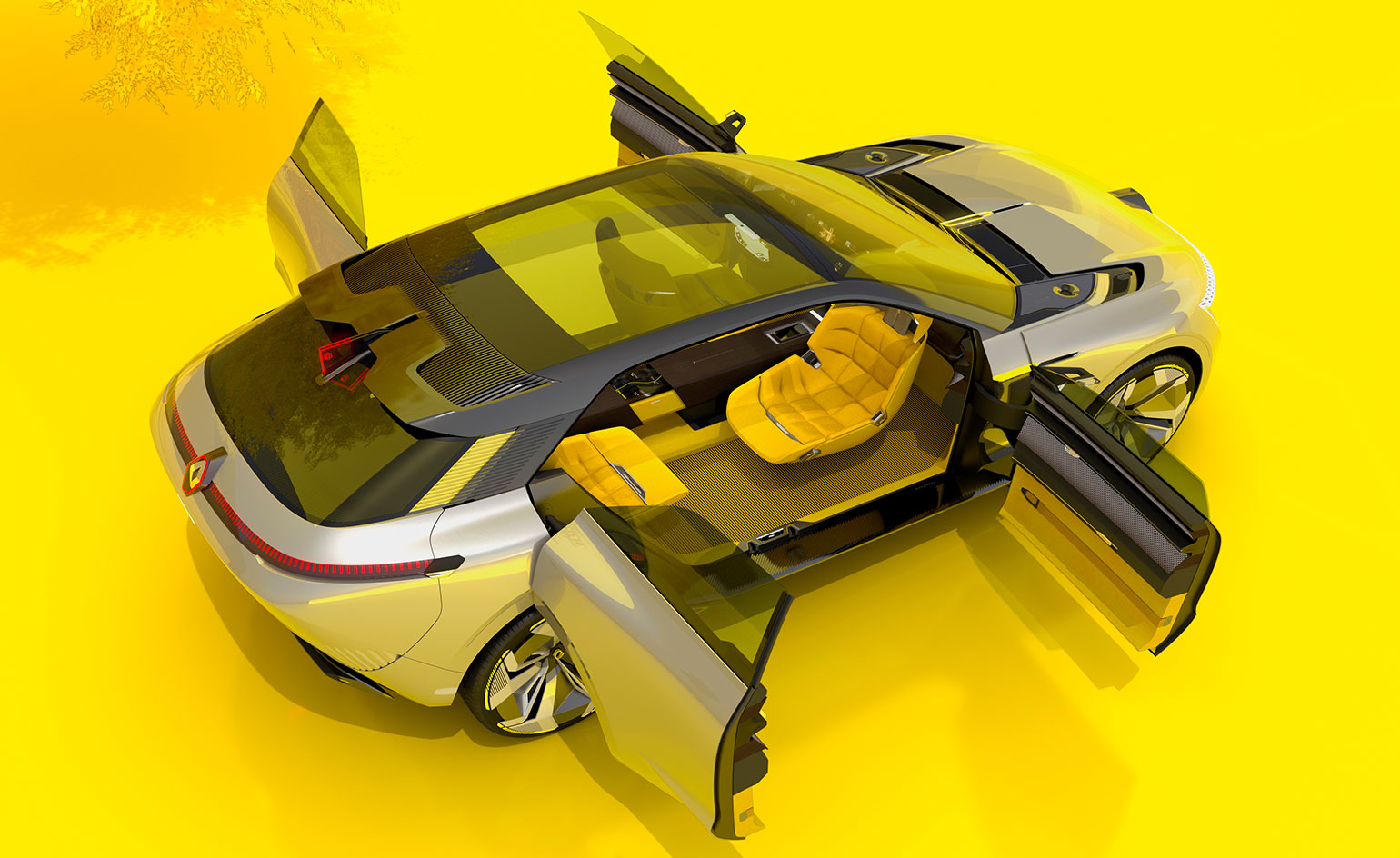 Geneva Motor Show digital showcase: the technology edit
Geneva Motor Show digital showcase: the technology editA digital walkthrough of the best technology due to be shown at Geneva Motor Show 2020 in light of its precautionary cancellation
By Nargess Banks
-
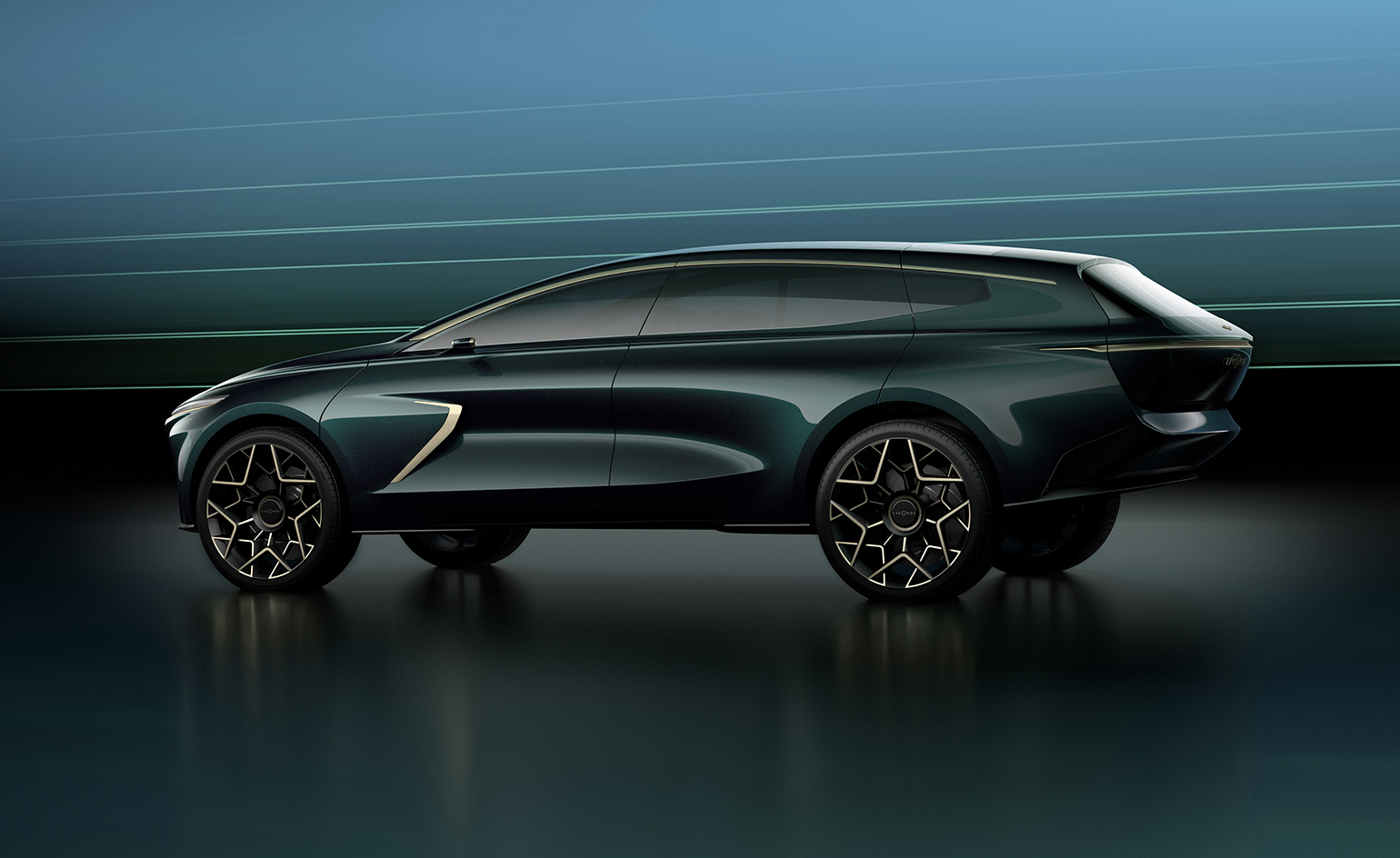 Next-generation concept cars unveiled at Geneva Motor Show 2019
Next-generation concept cars unveiled at Geneva Motor Show 2019By Guy Bird
-
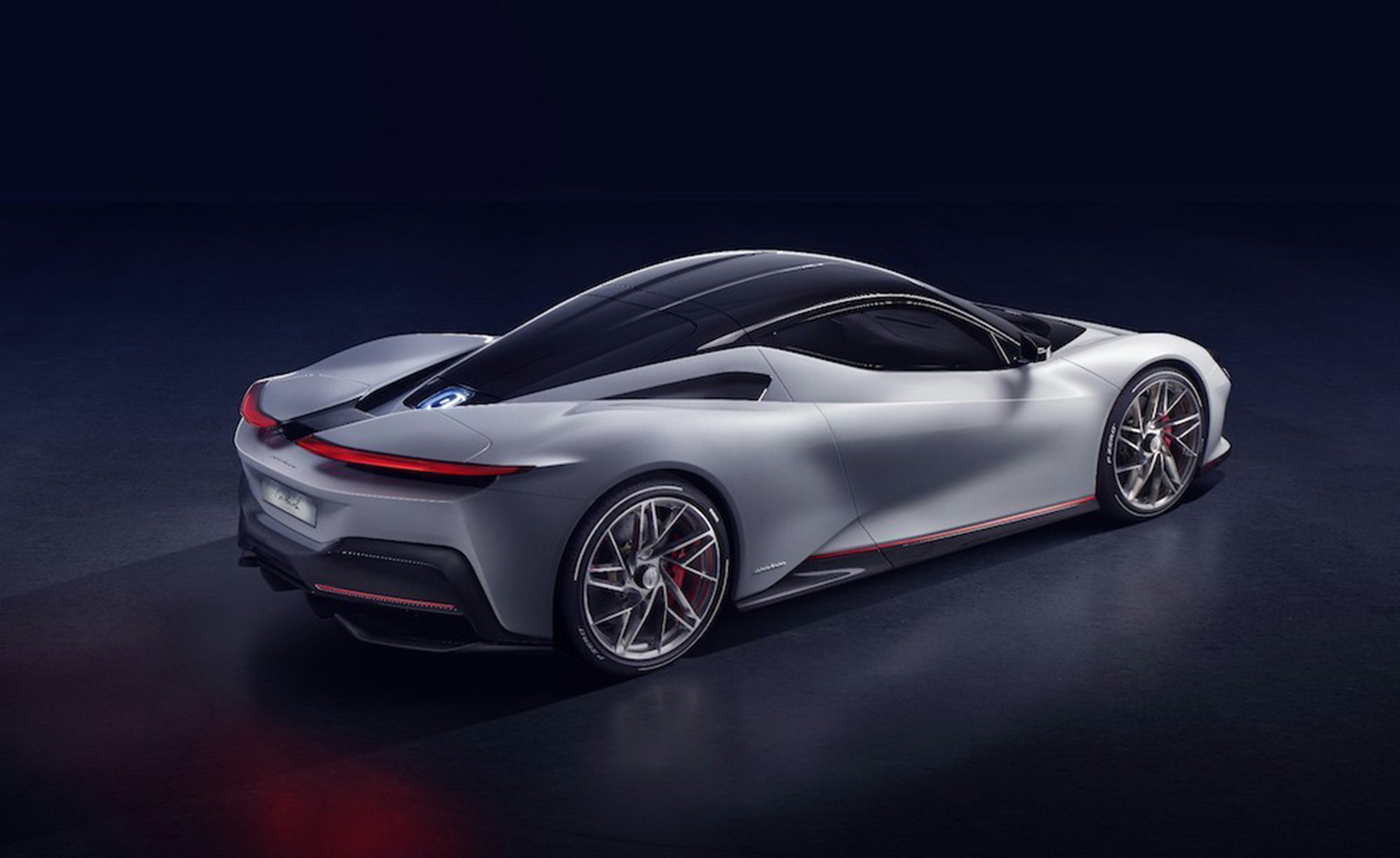 Sustainability shapes the narrative arc of Geneva Motor Show 2019
Sustainability shapes the narrative arc of Geneva Motor Show 2019By Nargess Banks
-
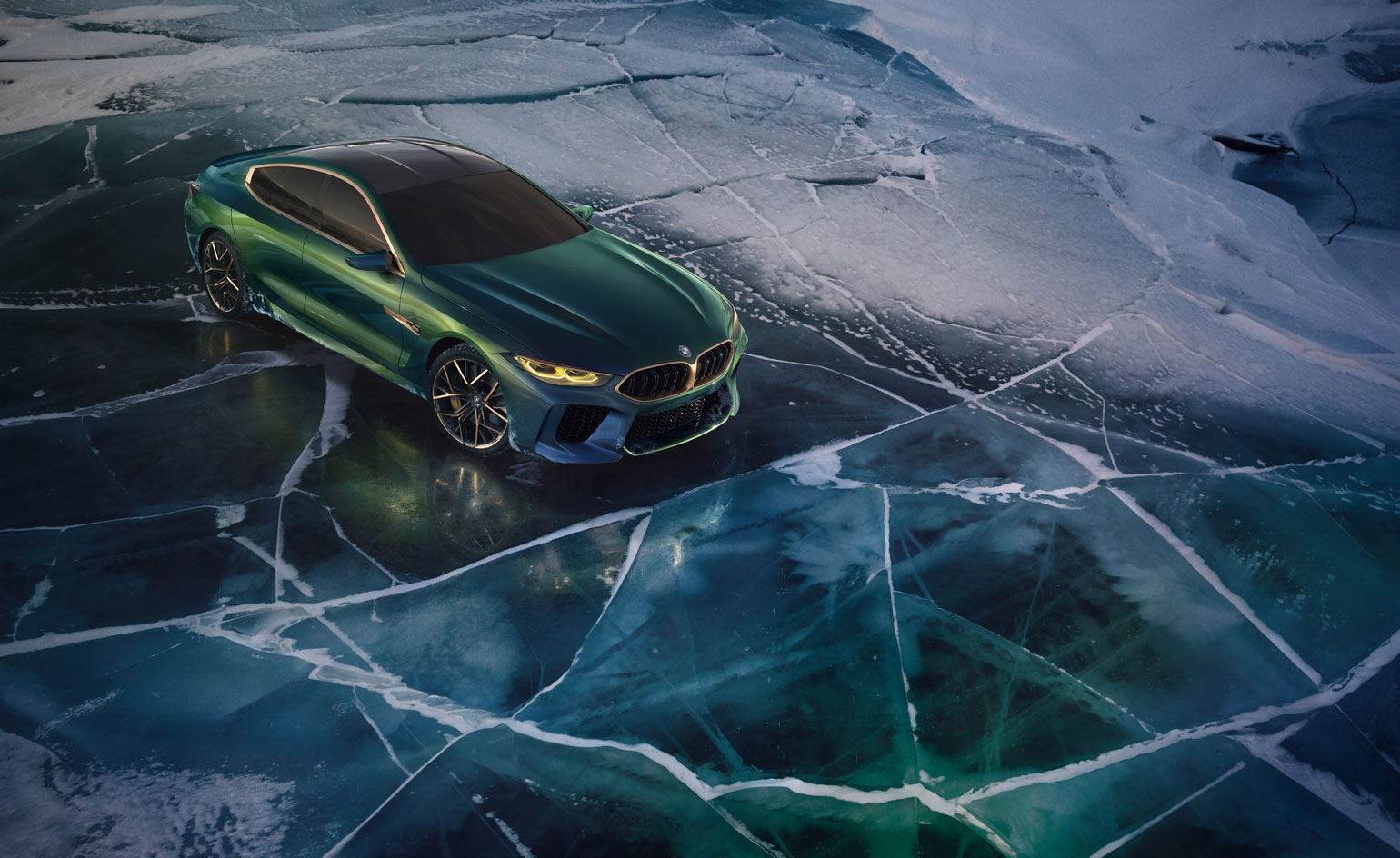 The best new cars launched at Geneva Motor Show 2018
The best new cars launched at Geneva Motor Show 2018By Nargess Banks
-
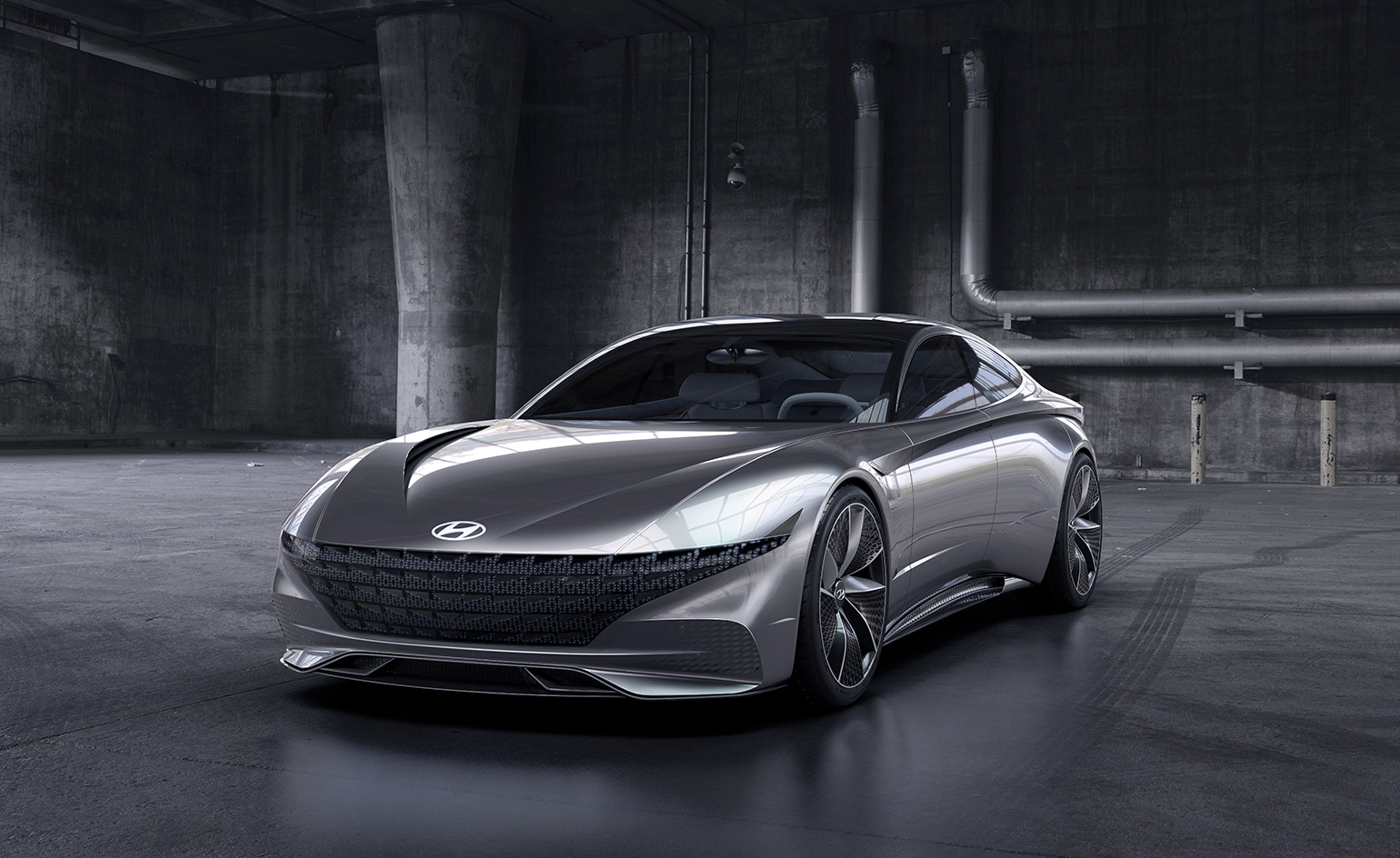 7 showstopping concept cars at Geneva Motor Show 2018
7 showstopping concept cars at Geneva Motor Show 2018By Guy Bird
-
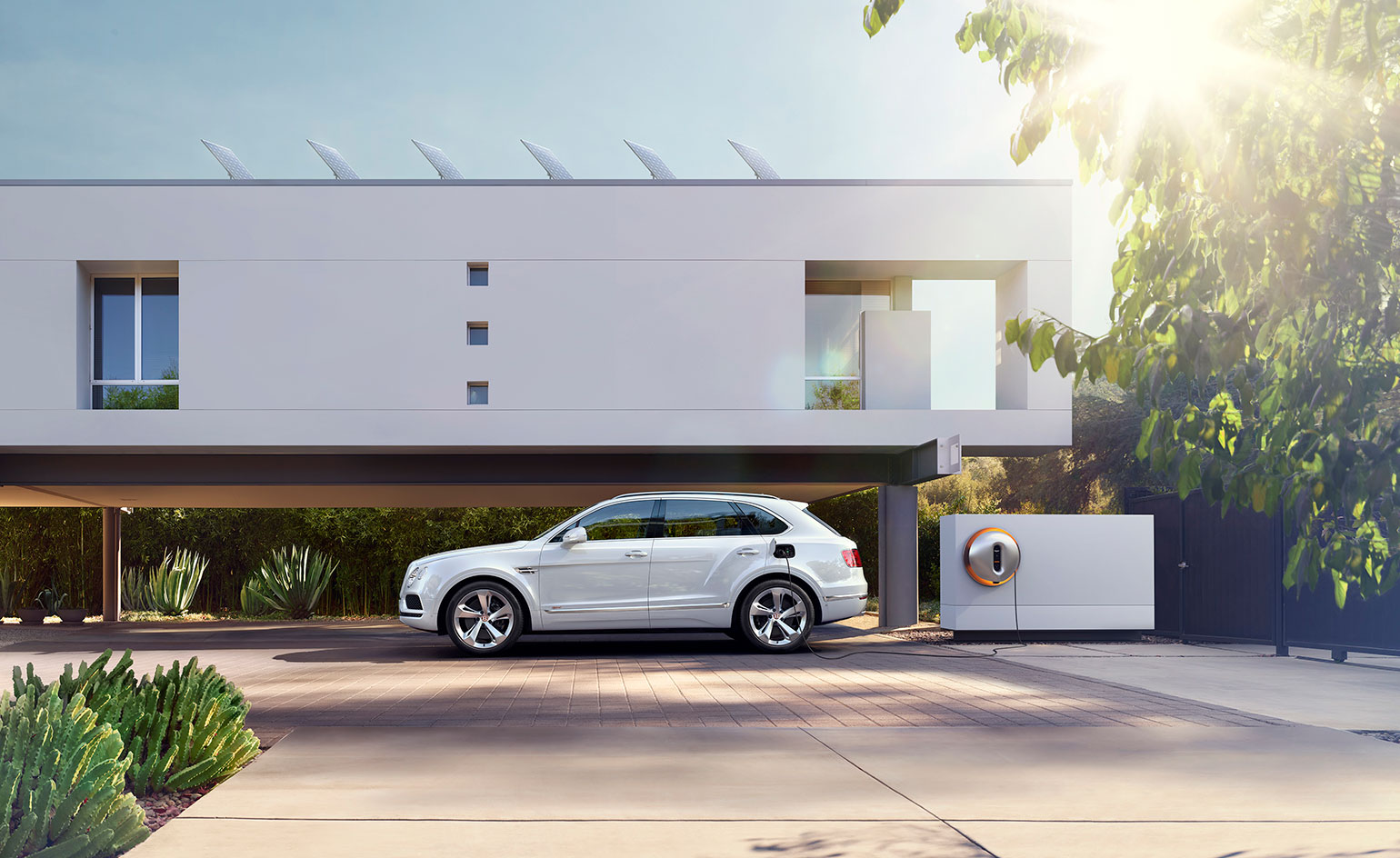 Geneva Motor Show powers up with a Philippe Starck and Bentley collaboration
Geneva Motor Show powers up with a Philippe Starck and Bentley collaborationBy Jonathan Bell